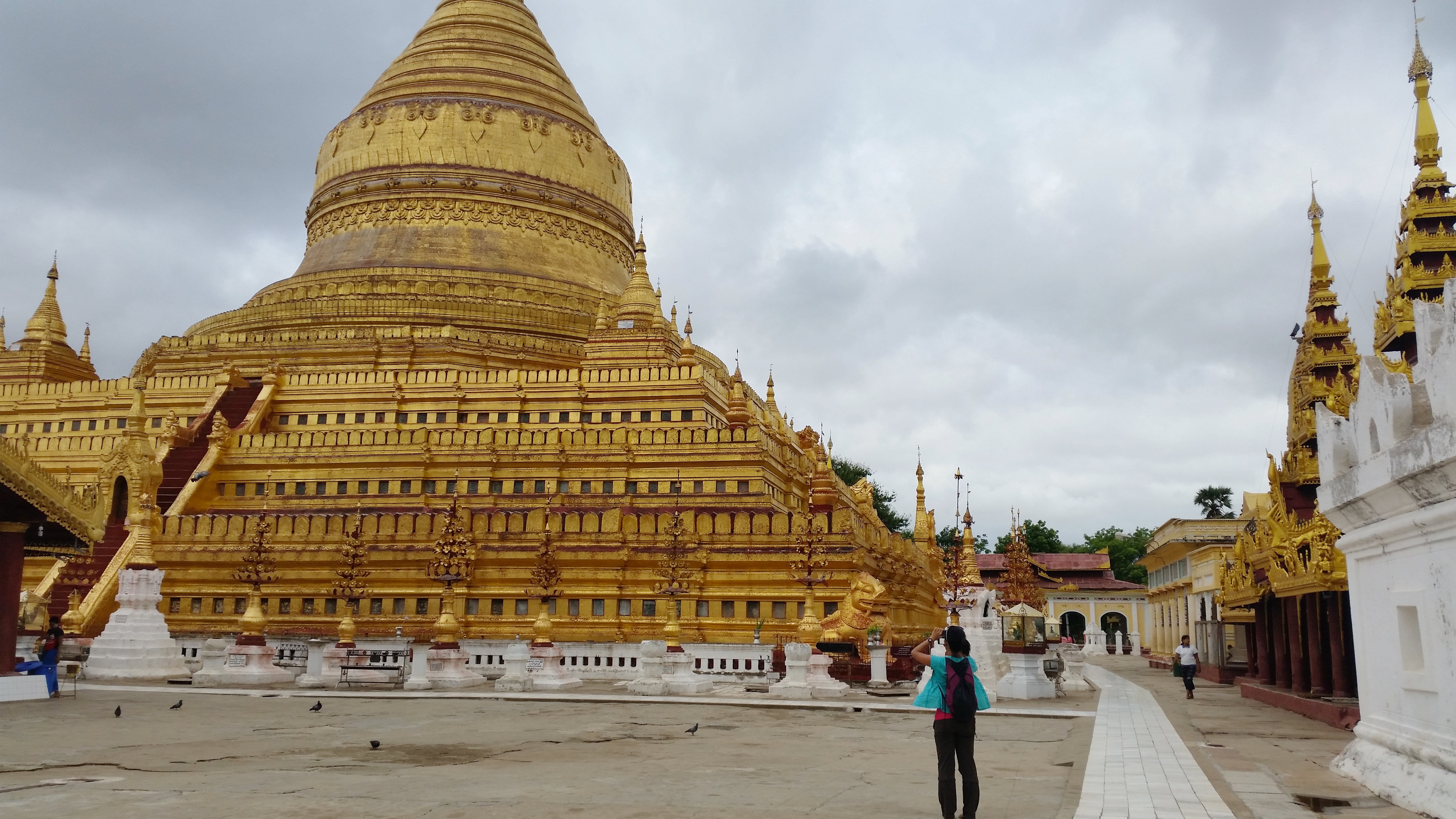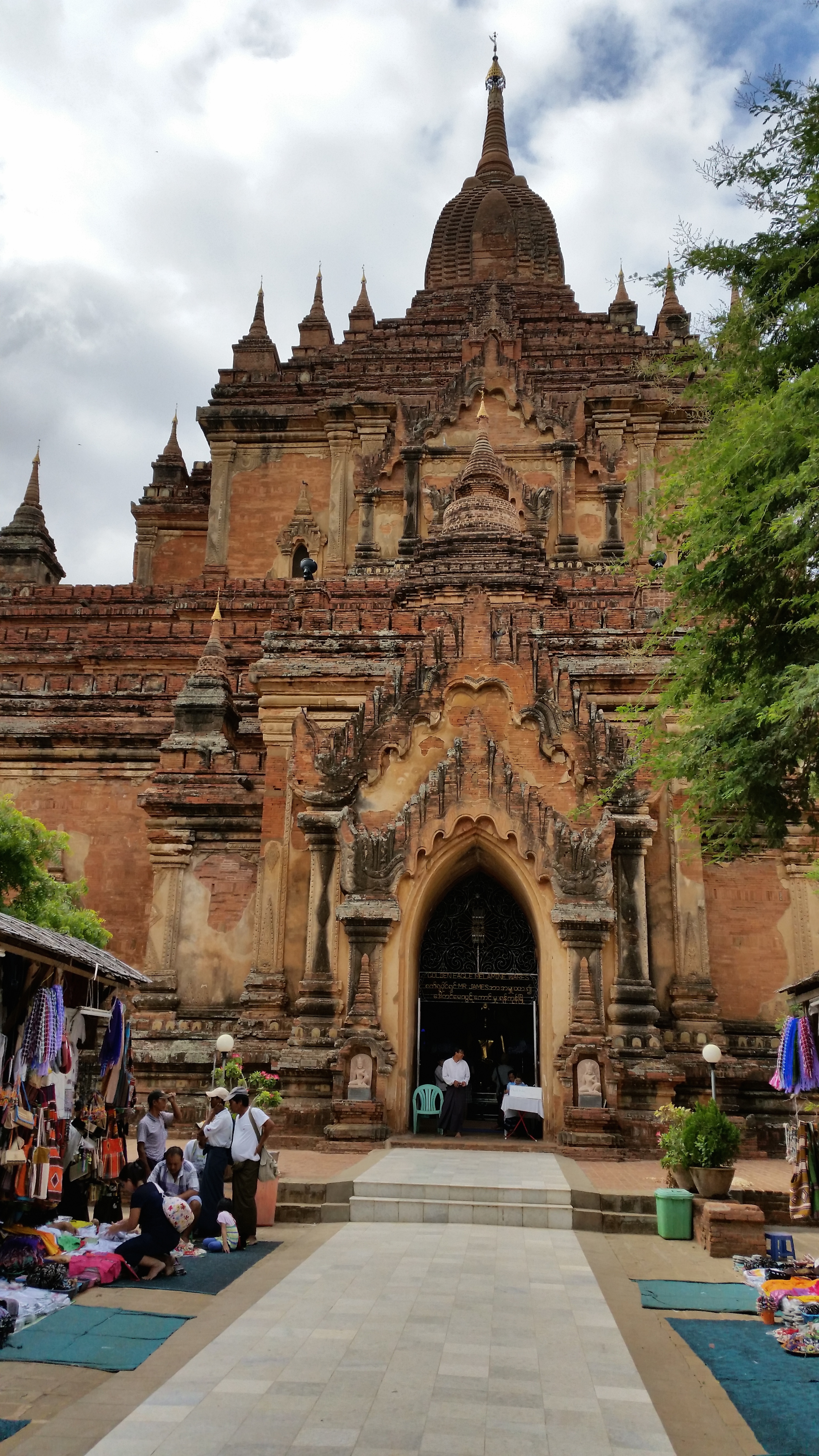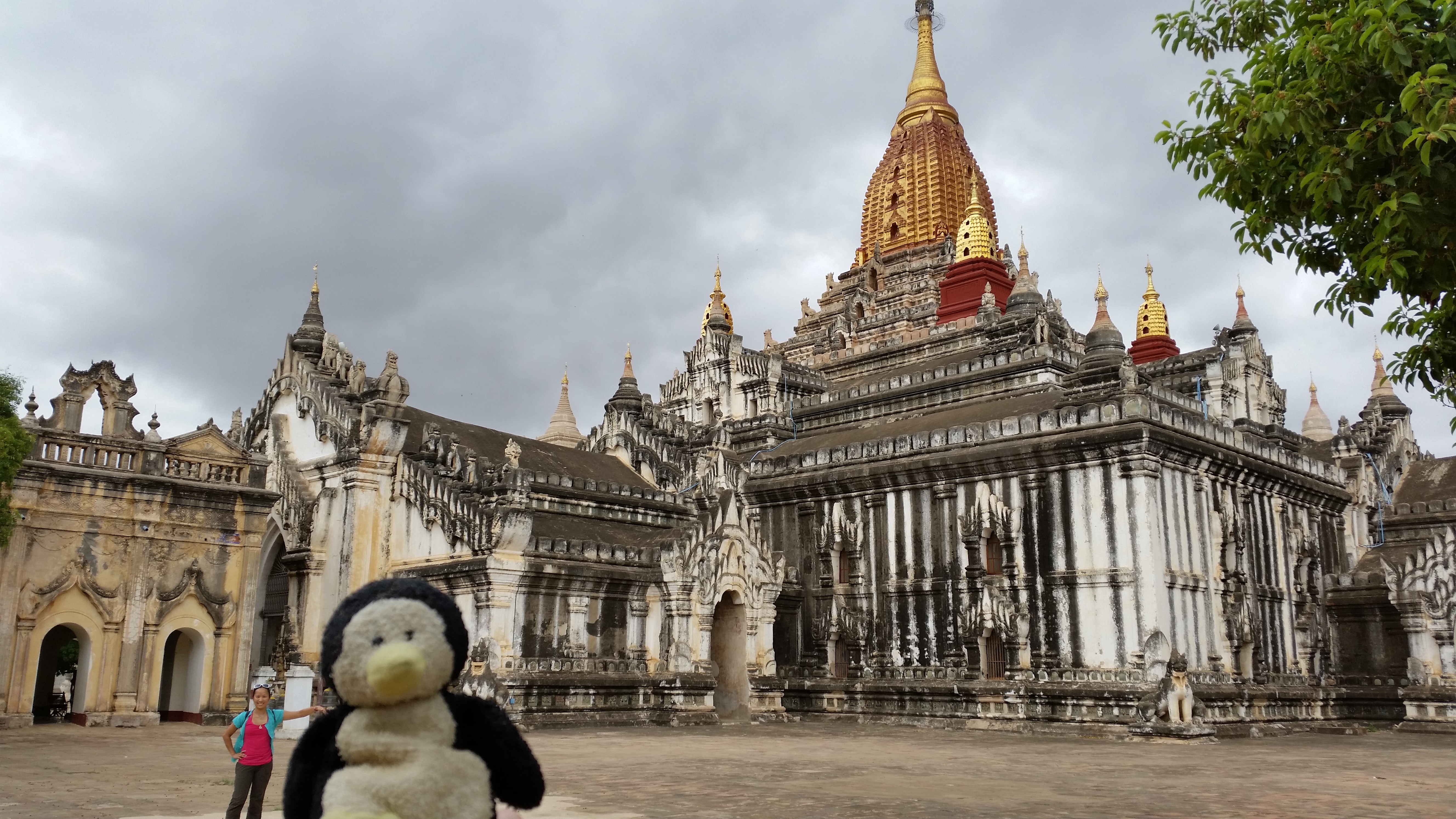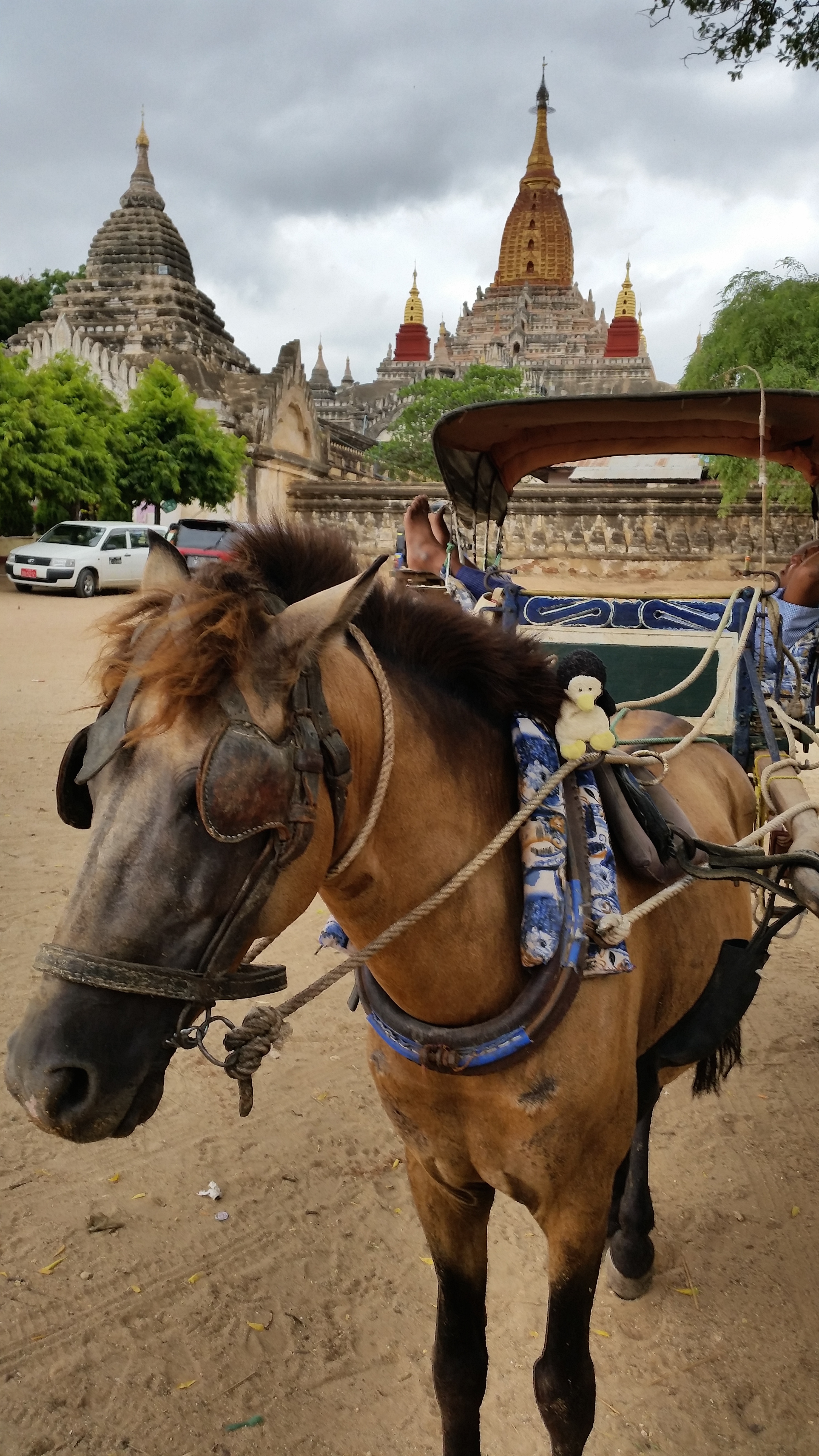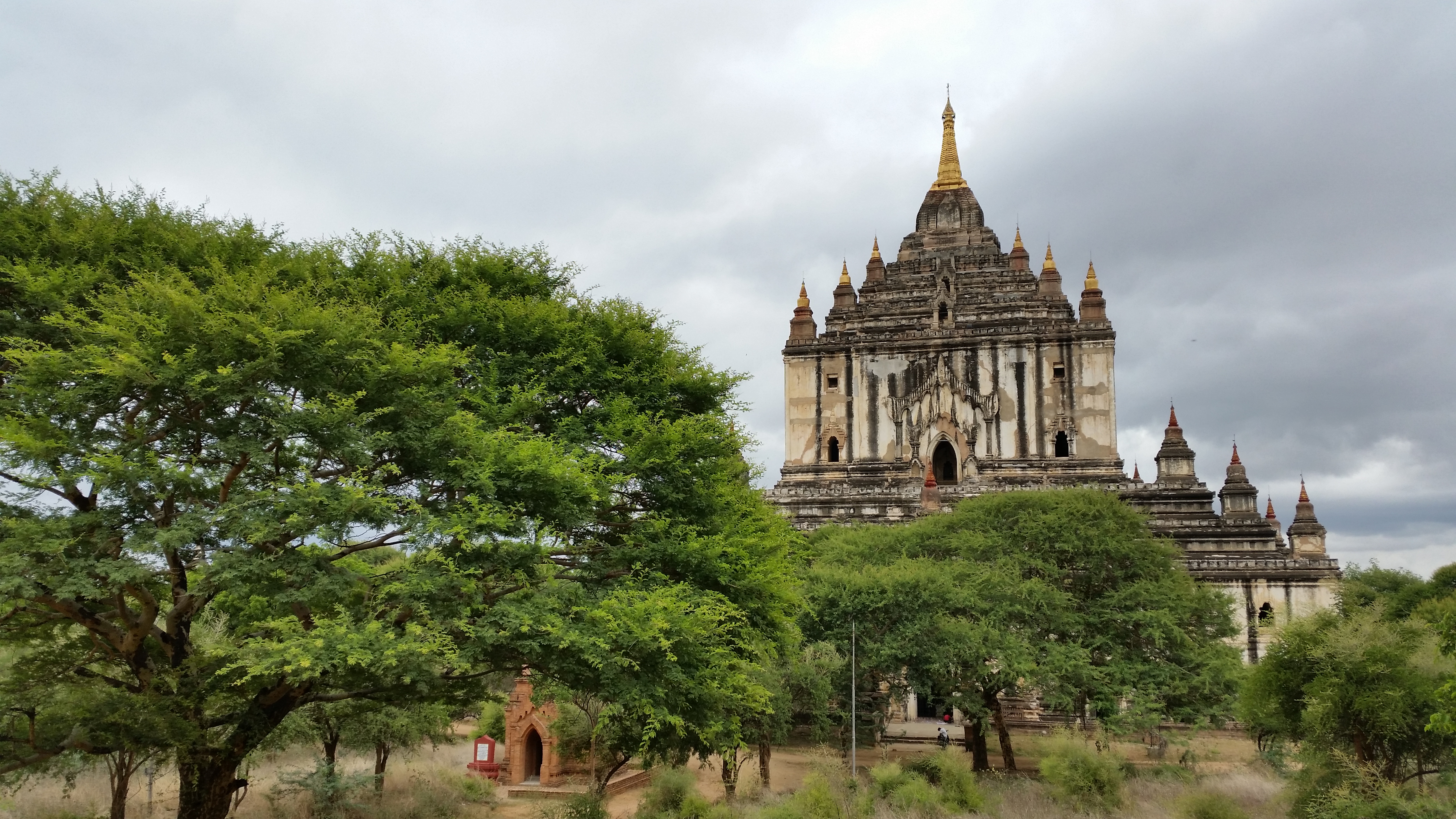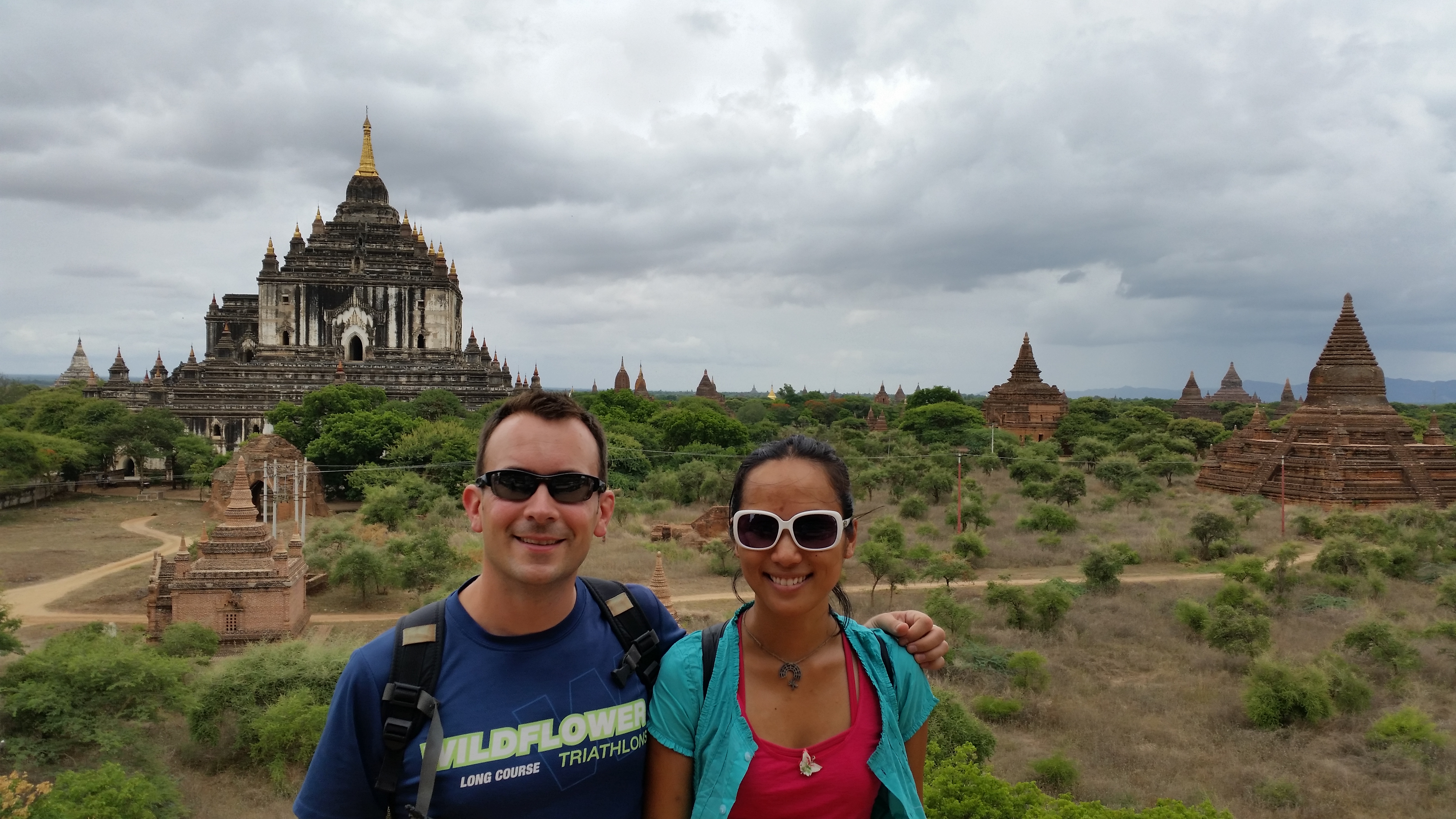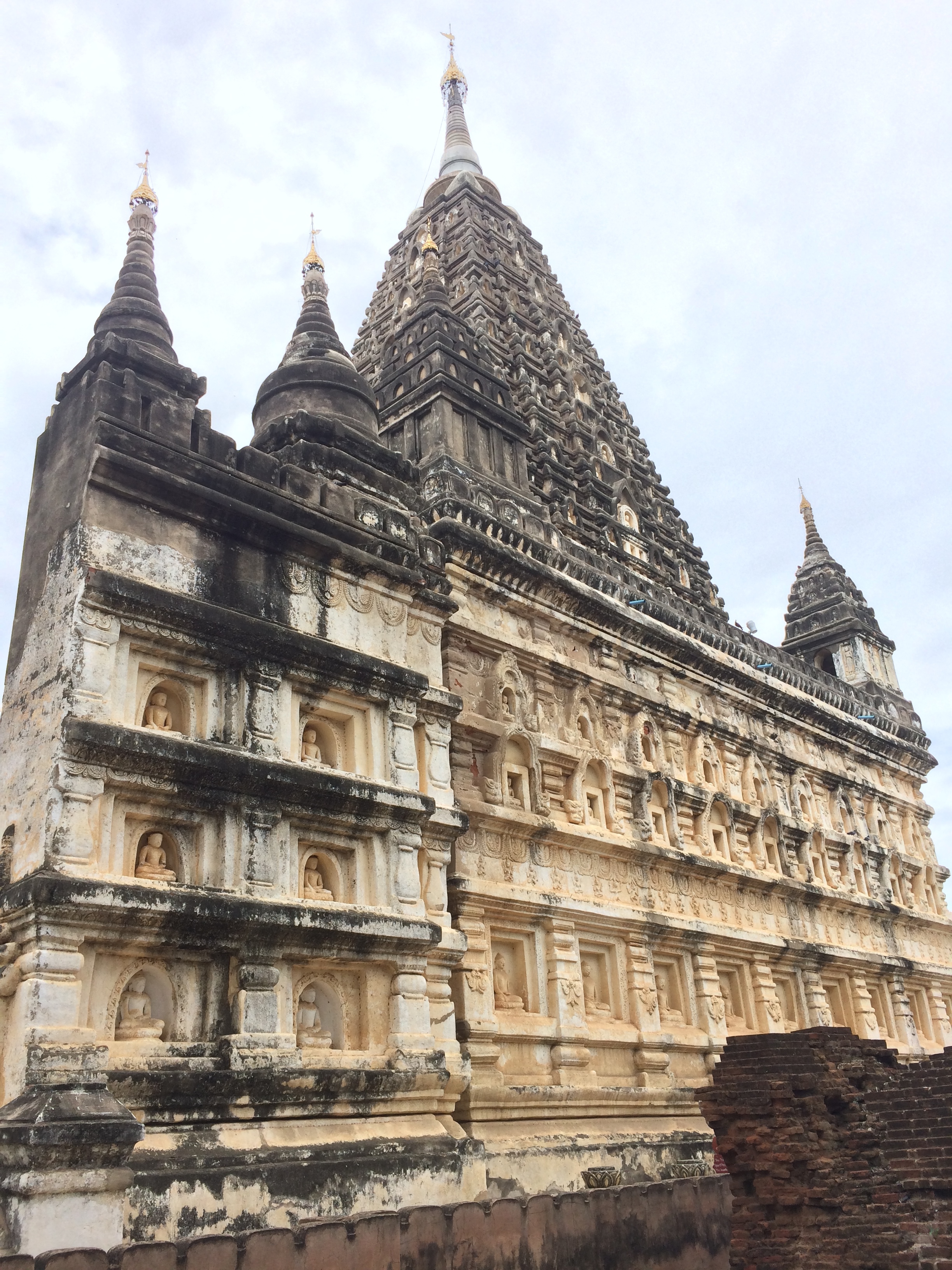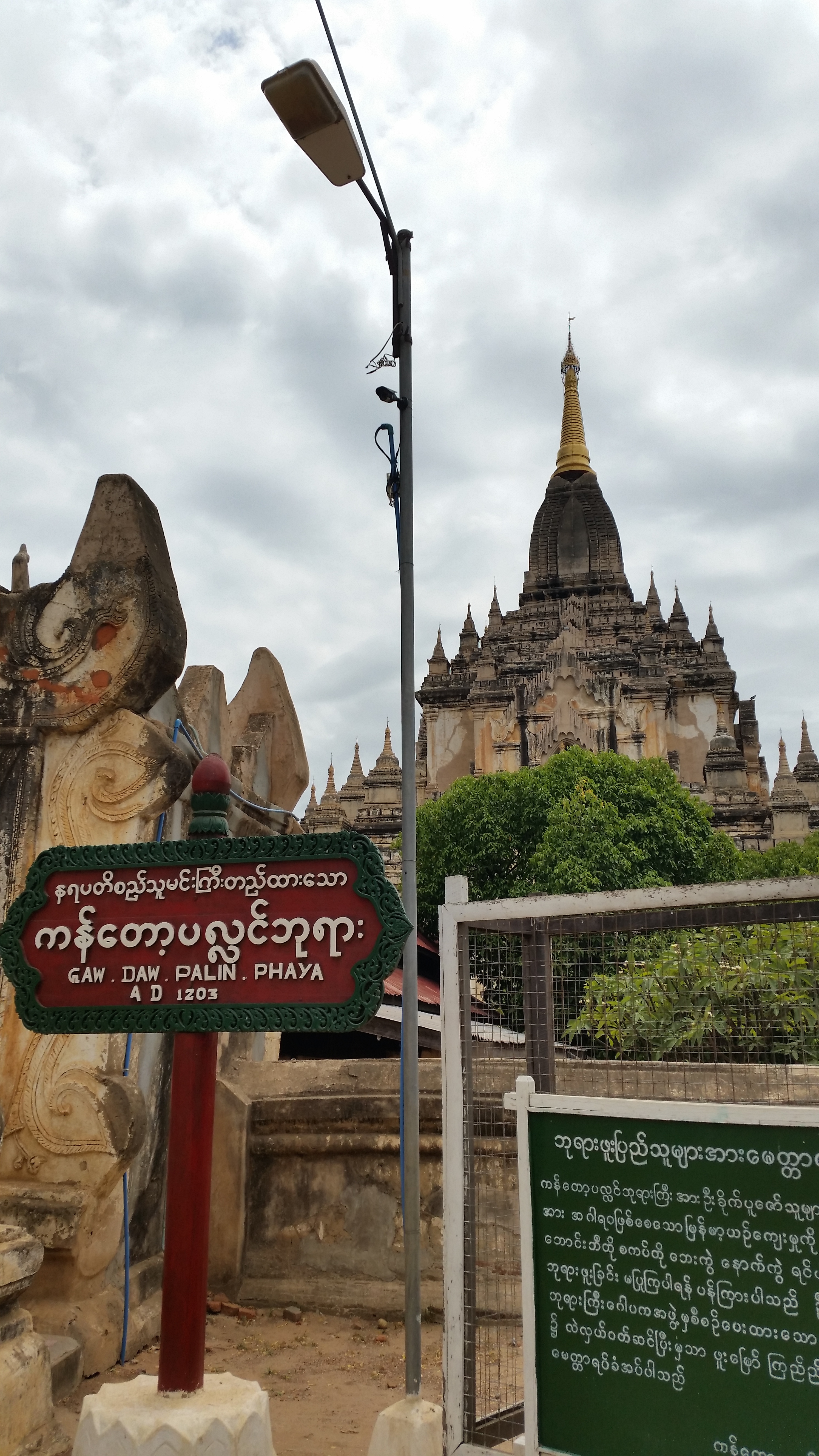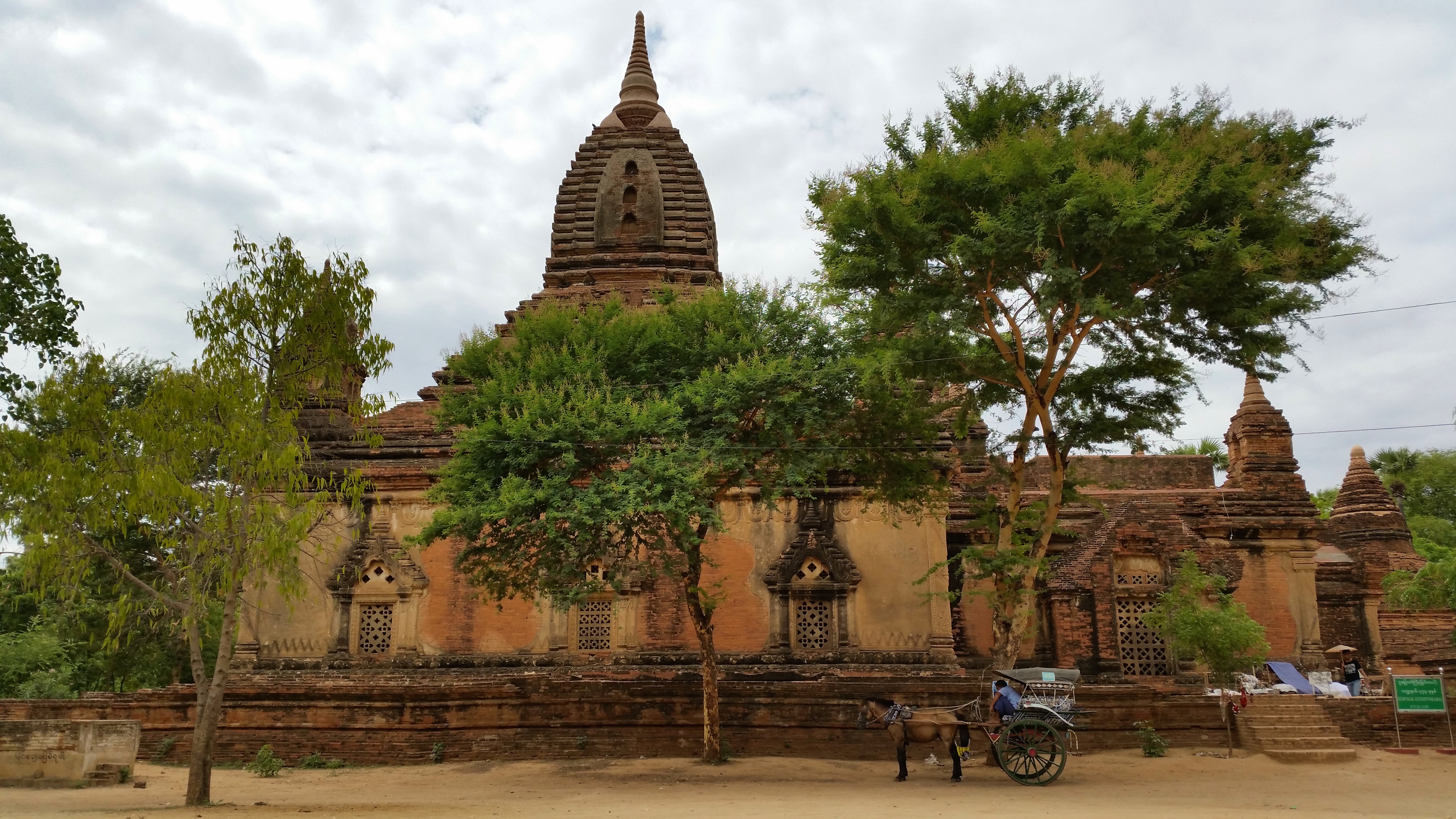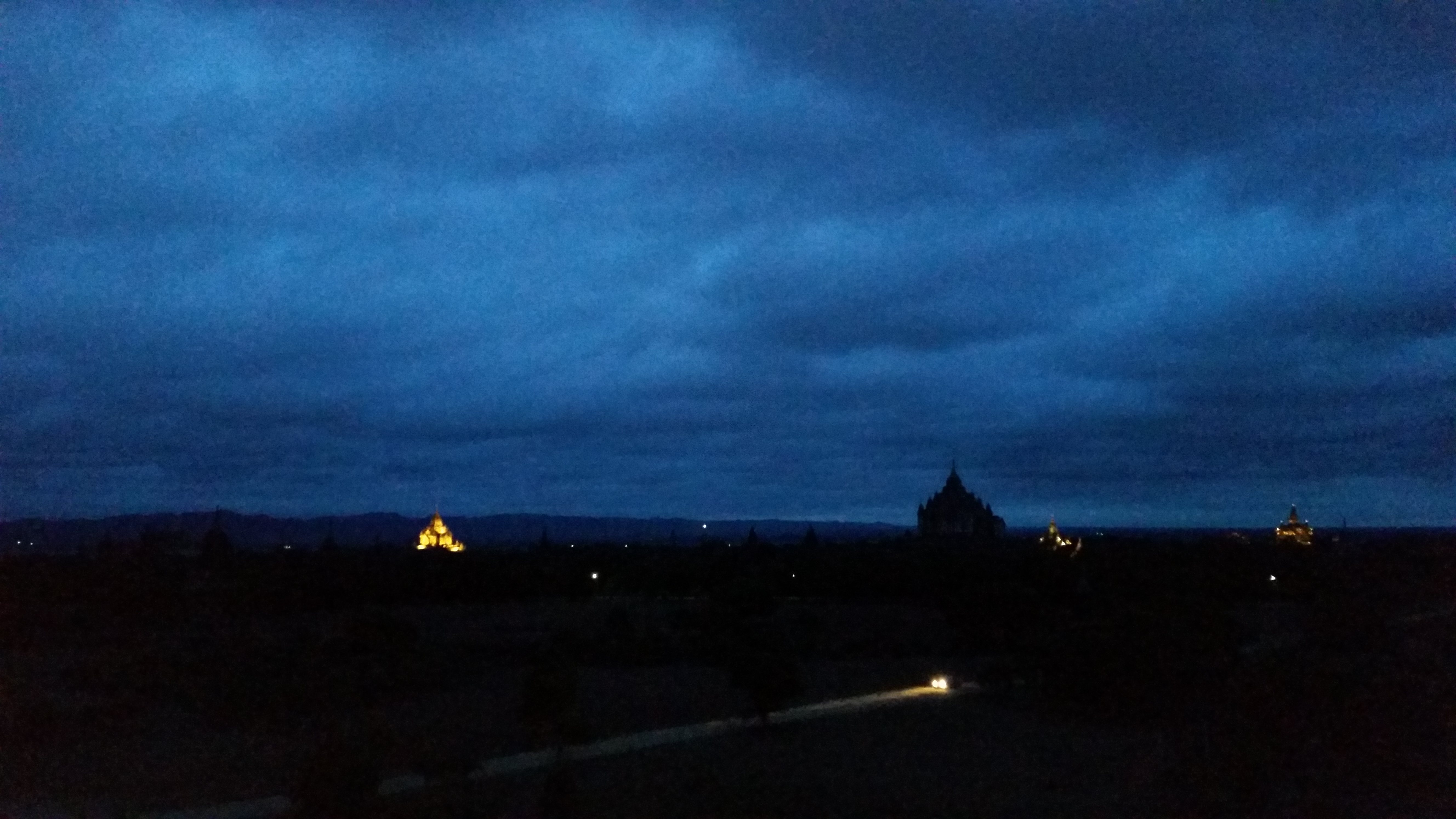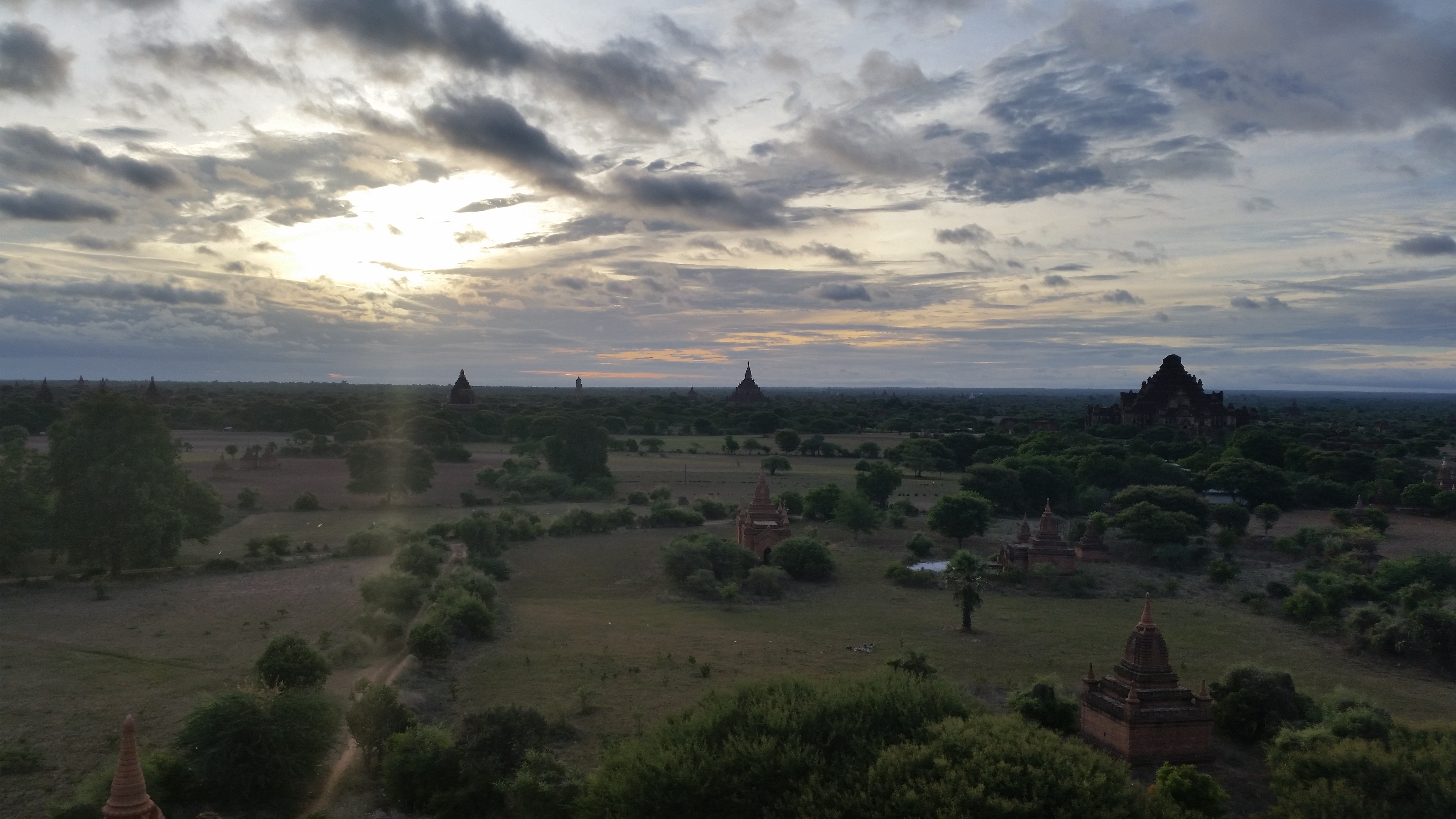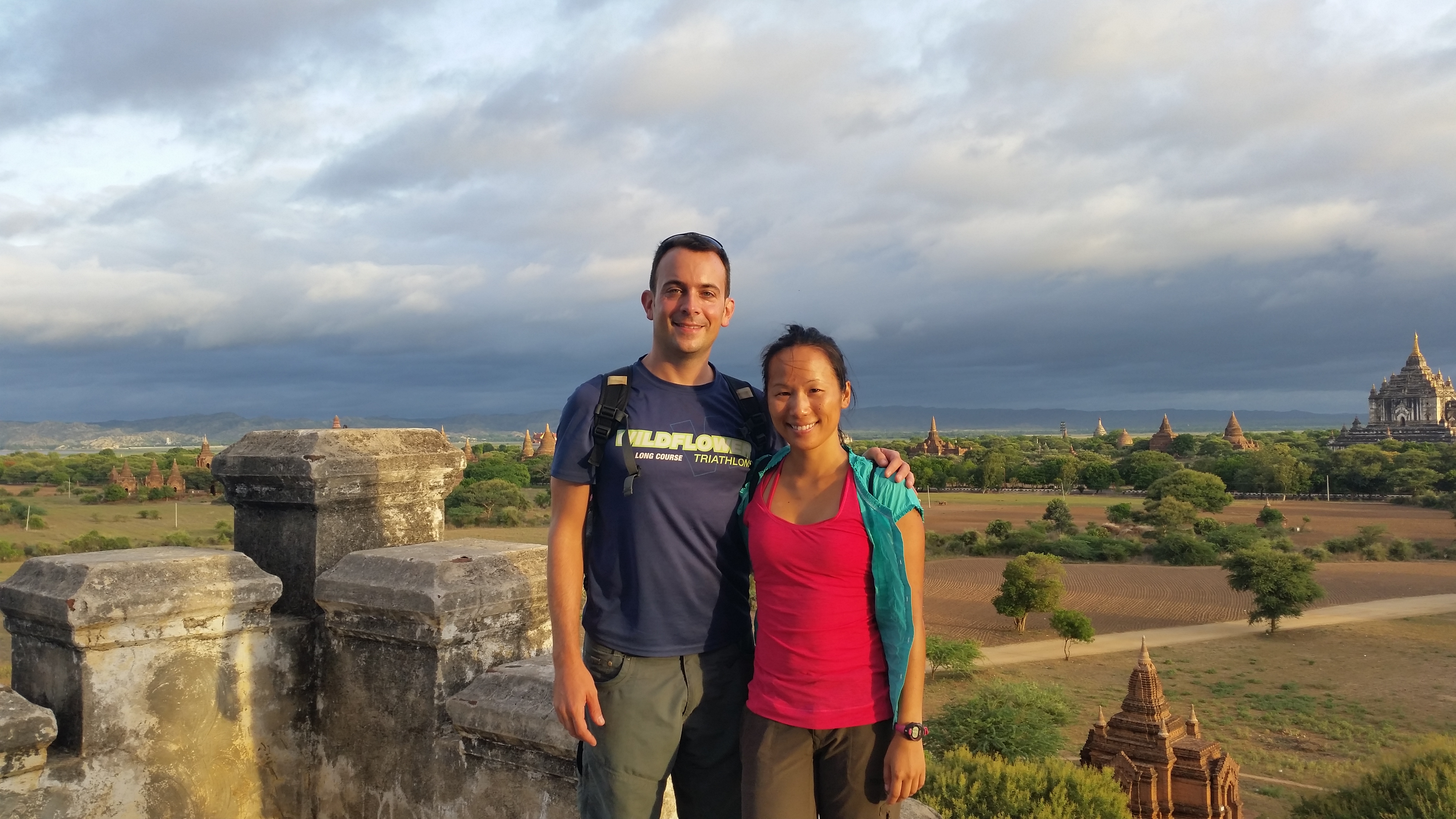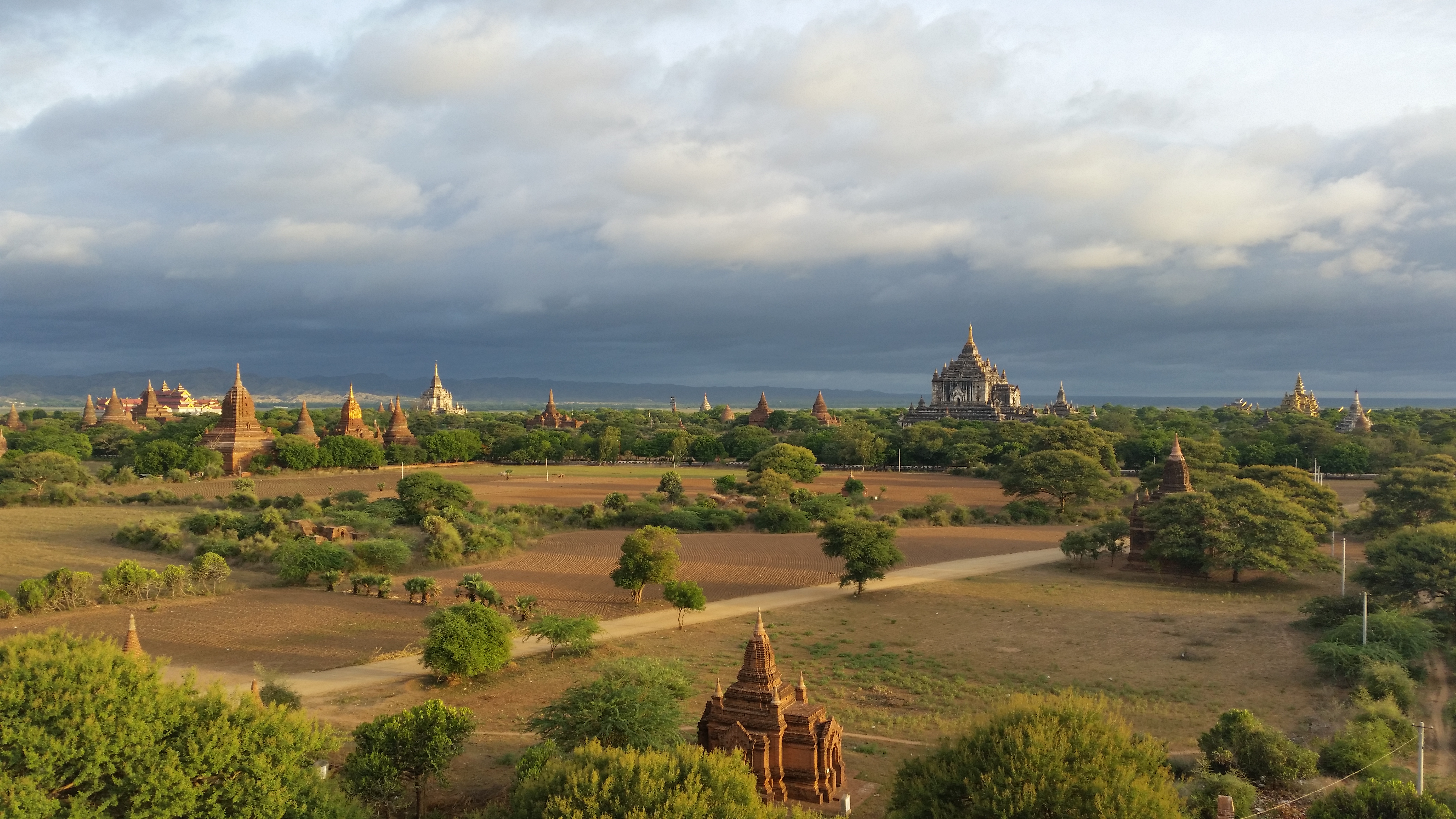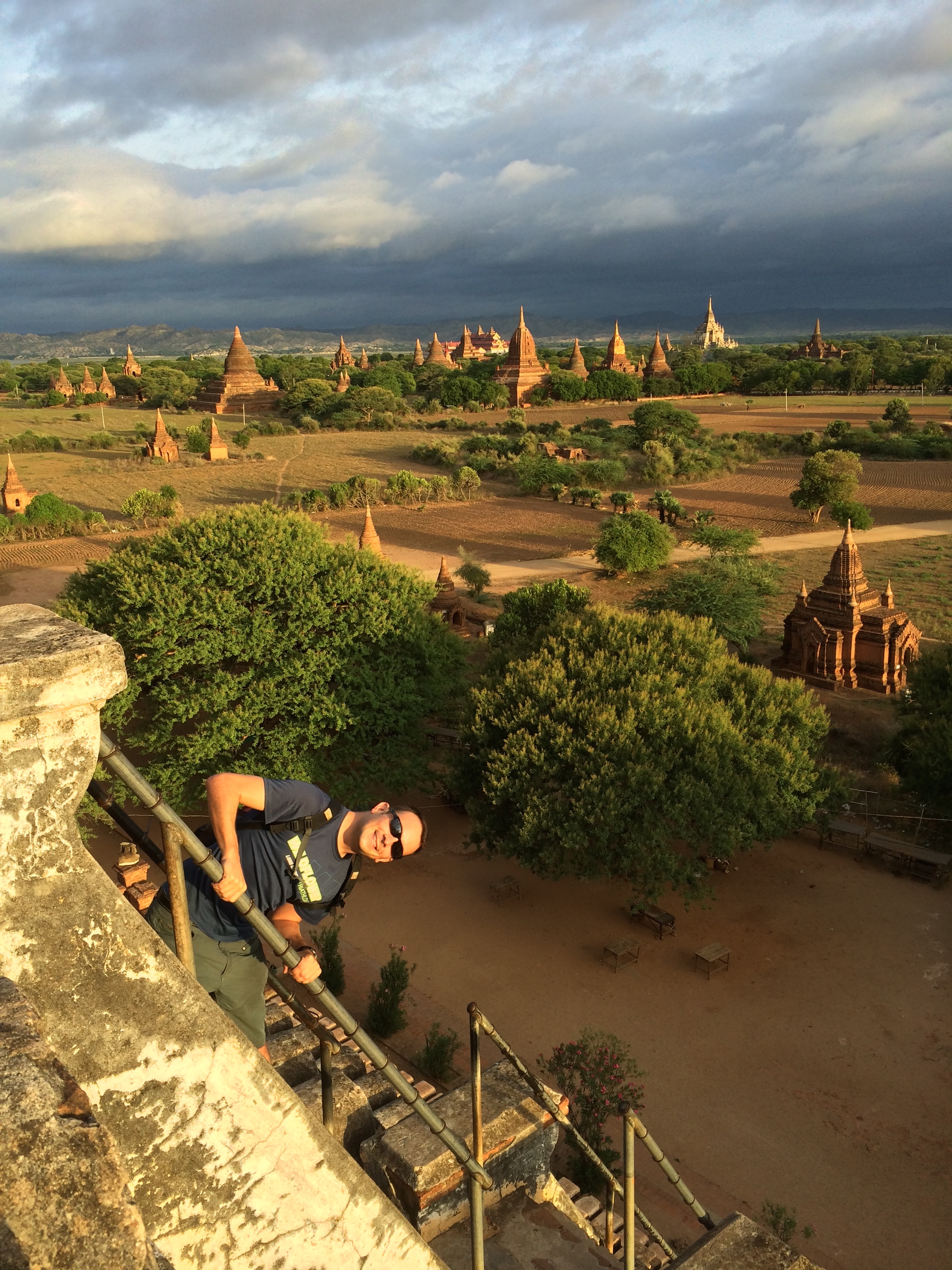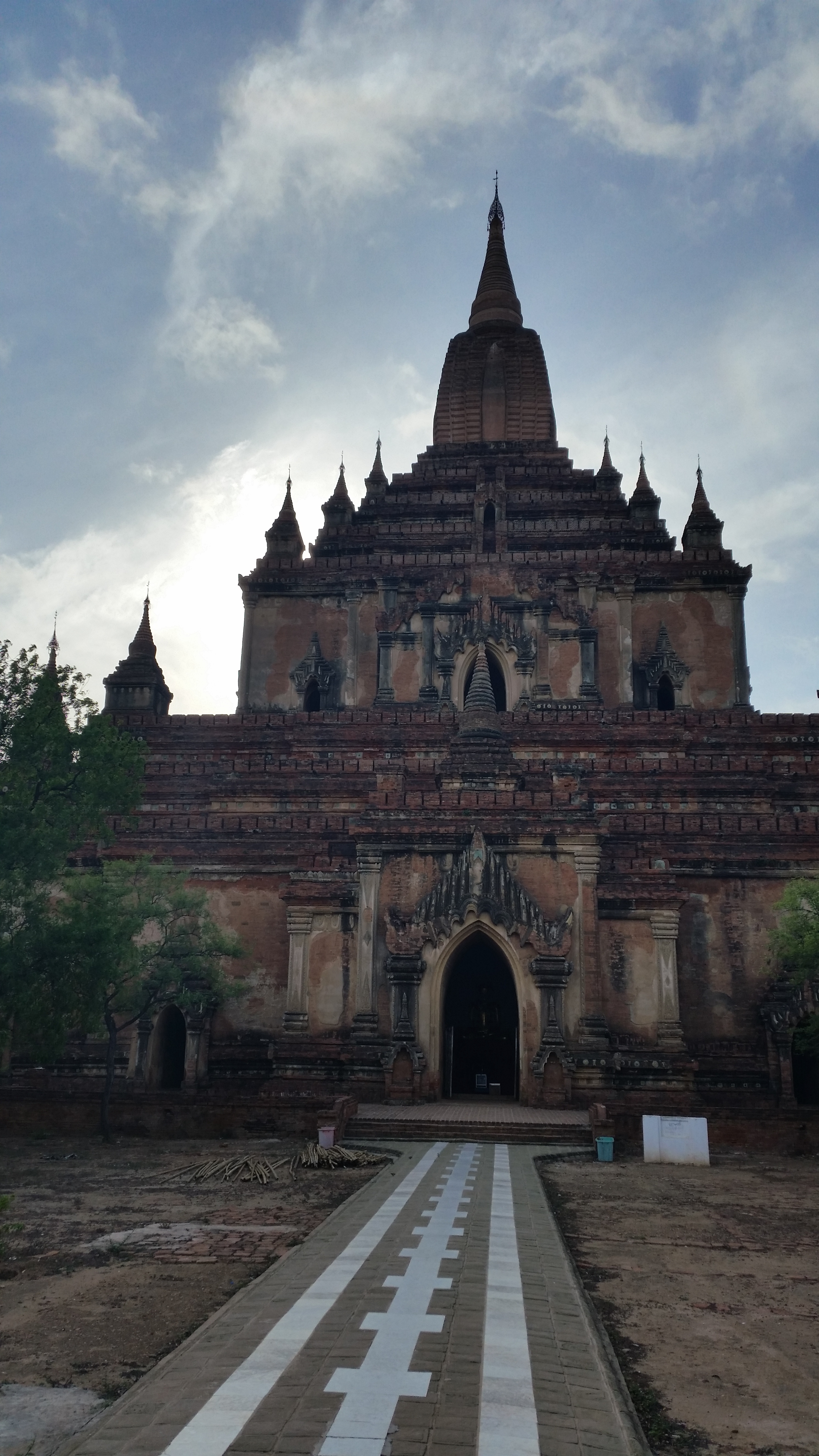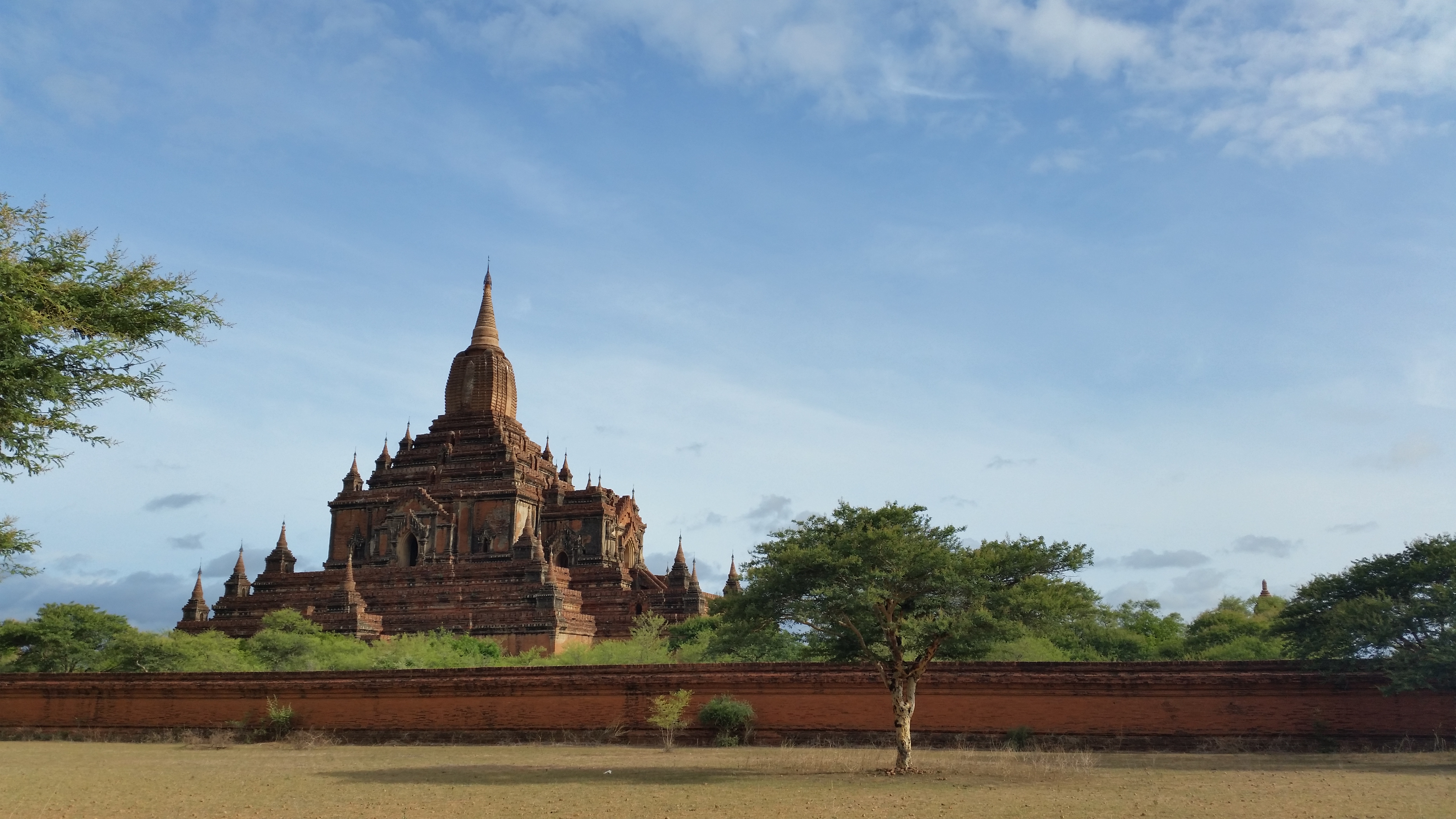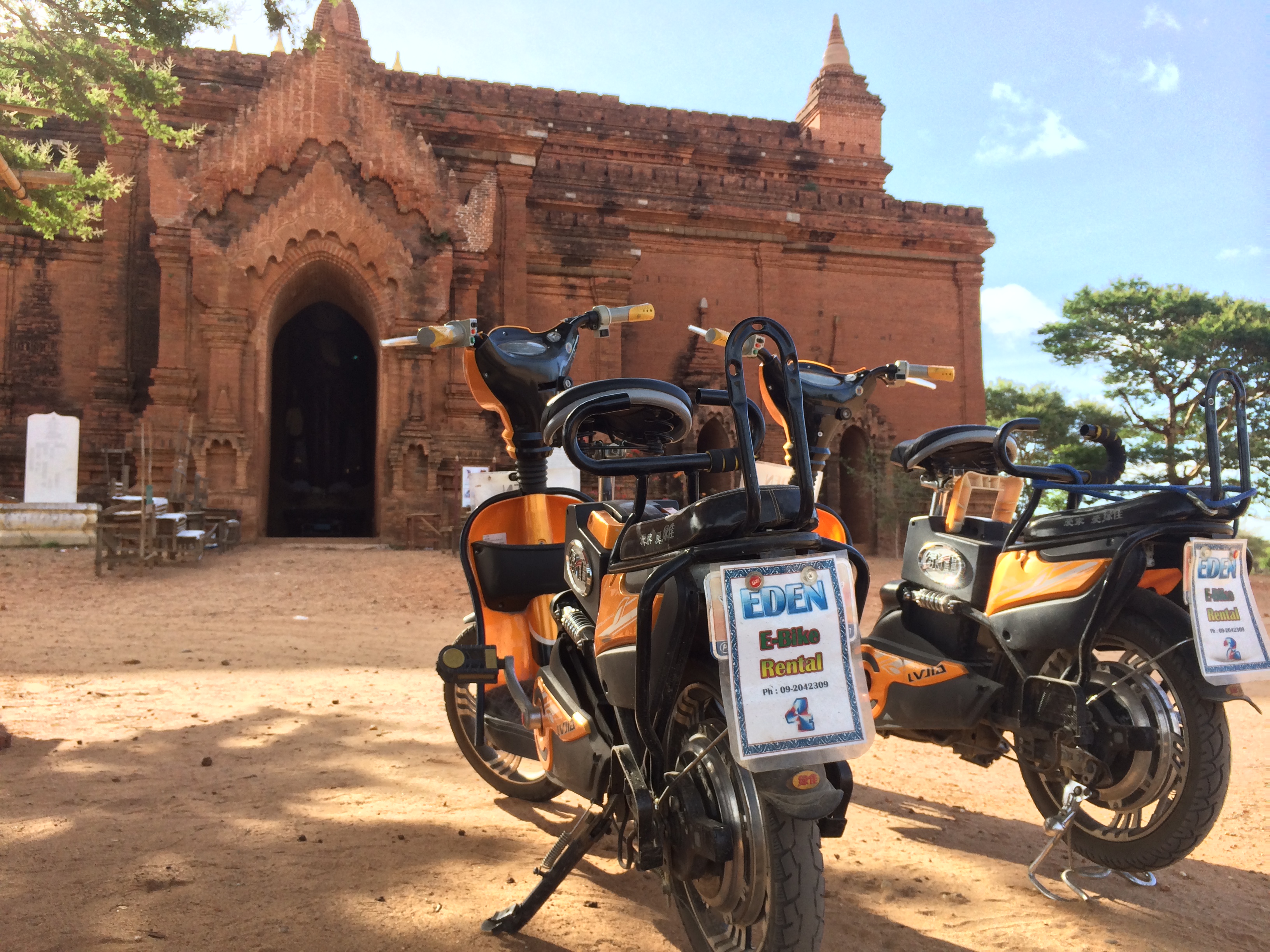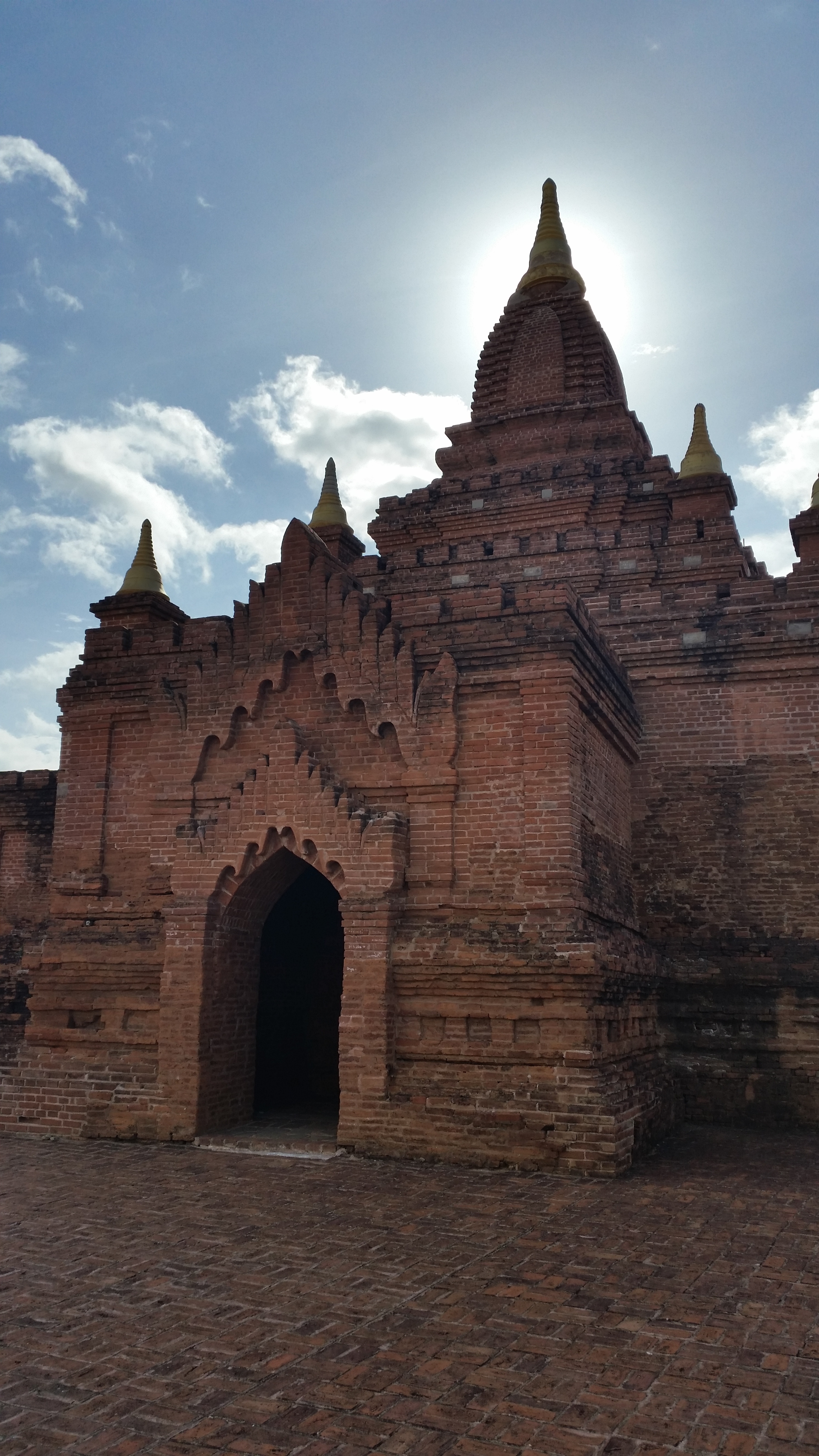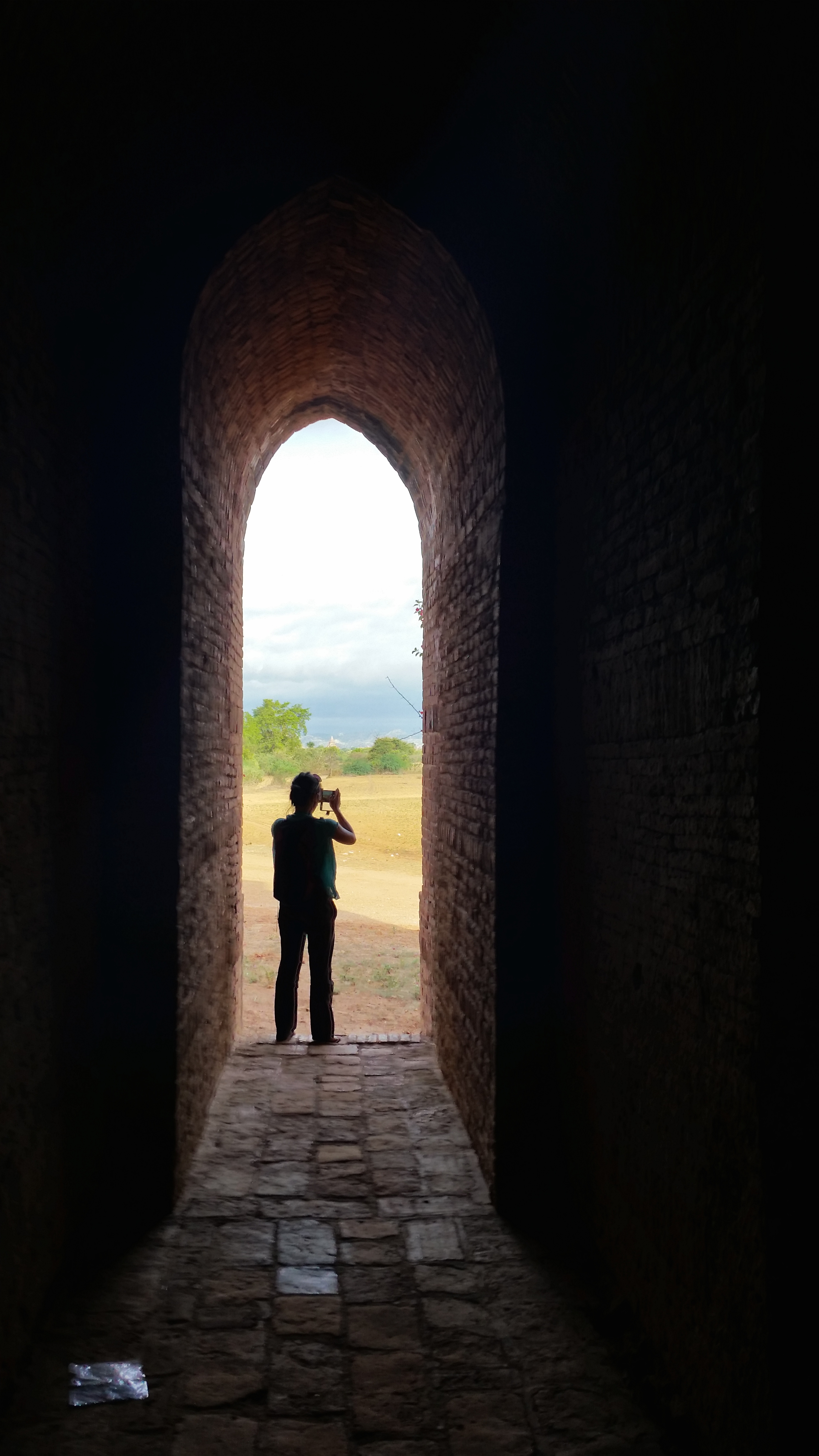Next up on our list of Myanmar destinations was Bagan, the ancient kingdom I looked forward to the most while visiting Myanmar. Home to over 2,000 temples, stupas, and pagodas, Bagan houses the highest concentration of Buddhist monuments in the world. Like Cambodia’s Angkor Wat, Bagan is famous for its vast archeological religious complex; however, unlike Angkor Wat, Bagan’s monuments seem to trickle on endlessly between the 26 square mile bare desert valley and farms with winding dusty dirt paths. It is difficult to comprehend the placement of Angkor’s notorious temples with its numerous moats, never-ending courtyards, and sky-reaching fortifications buried behind curtains of forest. In contrast, Bagan’s monuments, though higher in quantity yet significantly smaller in size, were easy to navigate and explore thanks to the simple paths, bare grounds, and few trees.
The city of Bagan is primarily divided into three sections along the Irawaddy River: Nyaung U to the northeast, Old Bagan in the center, and New Bagan to the south. Old Bagan is conveniently located smack in the center of the ancient monuments but only offer high-end luxury government-run resorts as accommodation. Citizens who once resided in Old Bagan were actually forced to move to a few kilometers to the south by the government, forming present-day New Bagan, where a number of mid-range hotels and restaurants can be found. Nyaung U, a small town just a few kilometers northeast of Old Bagan has the most markets, shops, restaurants, and budget hotels in the area and is the ideal hub for backpackers and budget travelers. We opted for Nyaung U, and we were glad we did.
Since Bagan is the #1 tourist destination in Myanmar, the locals there (particularly the tuk-tuk drivers) have sadly already learned how to scam tourists like those in Scambodia. As soon as our bus from Inle Lake parked in the bus station, a herd of Myanmar men swarmed the entrance like hungry flies. We enjoyed hearing their insane offers of $4 per passenger for a 7 kilometer ride into town, but my favorite lie was when we were told the government only allowed two passengers per tuk-tuk when we tried to pair up with another couple. After we saw a group of 5 passengers take off in a single tuk-tuk at $2 per passenger, an honest local quietly offered to take us into town at the local price—$1 per passenger. The rest of the men angrily chorded him in their language, but he graciously took us into town and even dropped us off at a pleasant motel in Nyaung U after asking us what type of accommodation we were looking for. We tipped him nicely and thanked him for being genuine.
We had two days to explore the temples and started our first day with a horse drawn carriage. These carriages are not actually just a tourist attraction; even after Myanmar gained independence from the British, they continued to use this as their mode of transportation. Locals can be seen all over Myanmar villages using the horse drawn carriage like a taxi. After breakfast we stepped out our hotel to find Mimin and his tiny eight-year-old horse, Lucky, waiting for us: 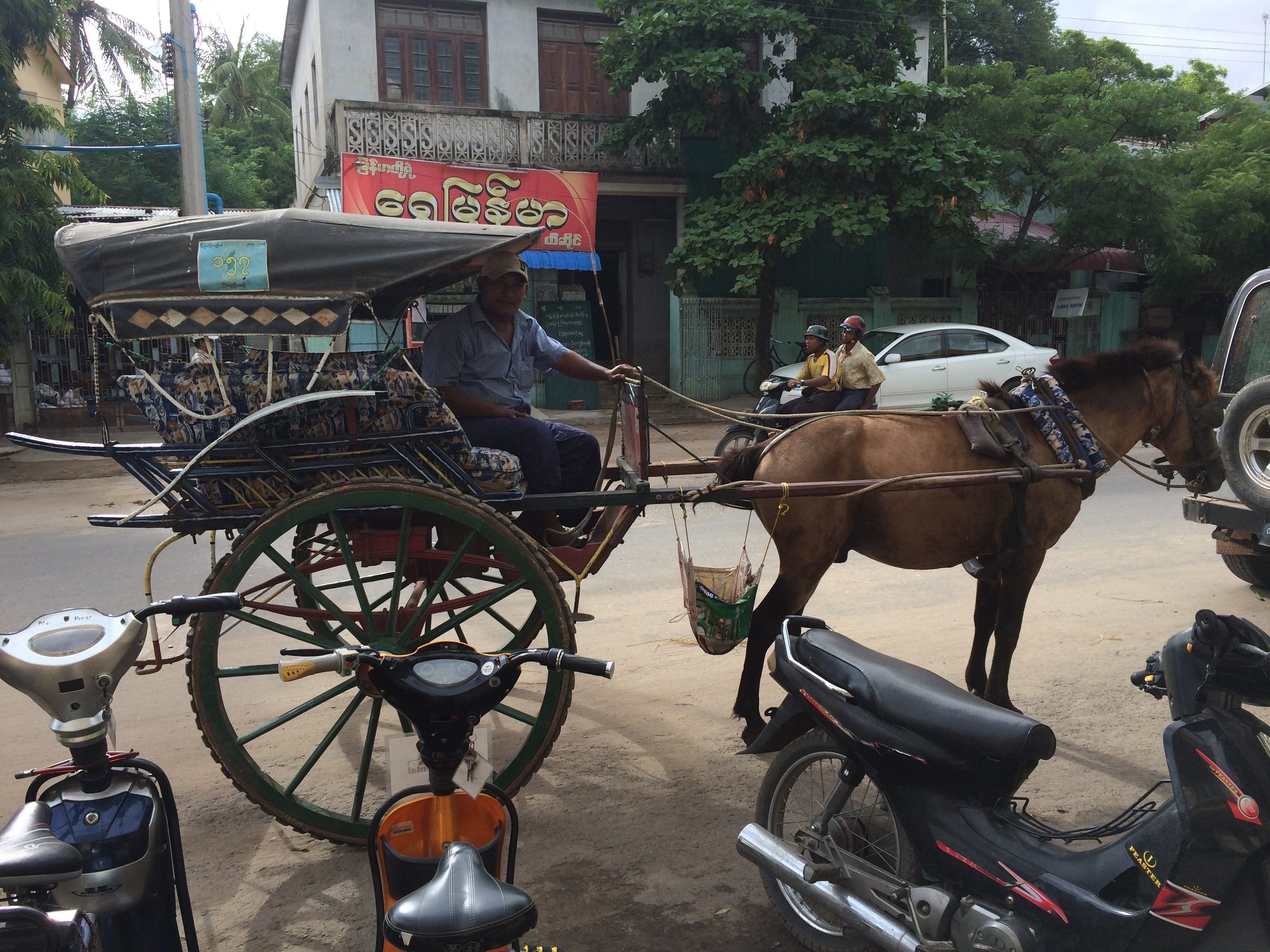
I have read in numerous books that traveling by horse and carriage can be slow and uncomfortable, but Chris and I thoroughly enjoyed our day by horse carriage. Traveling slowly allowed us to take in all the sites at a leisure pace; we did not blow by the major sites and dinky stupas that sat along the side of the road.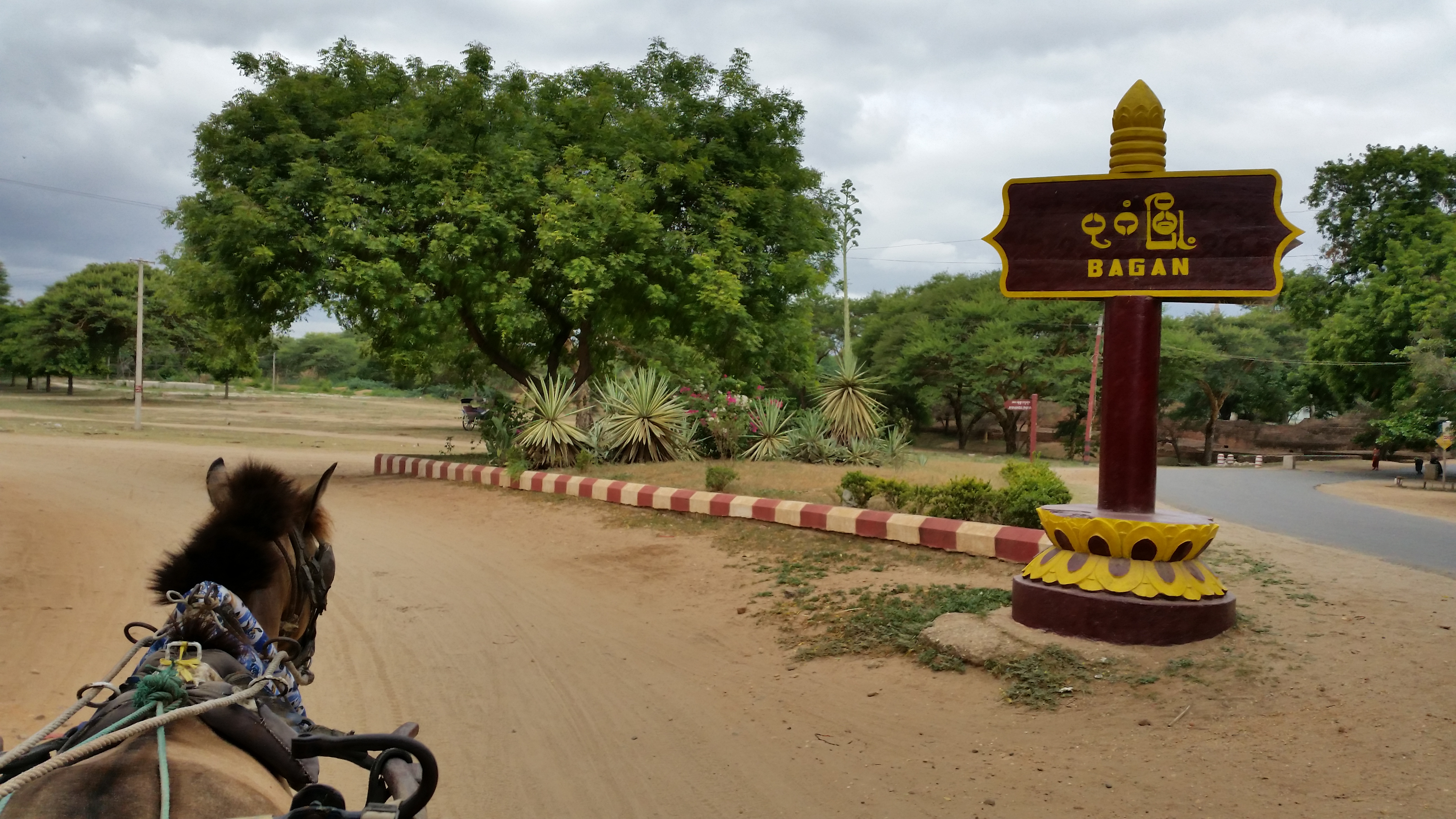
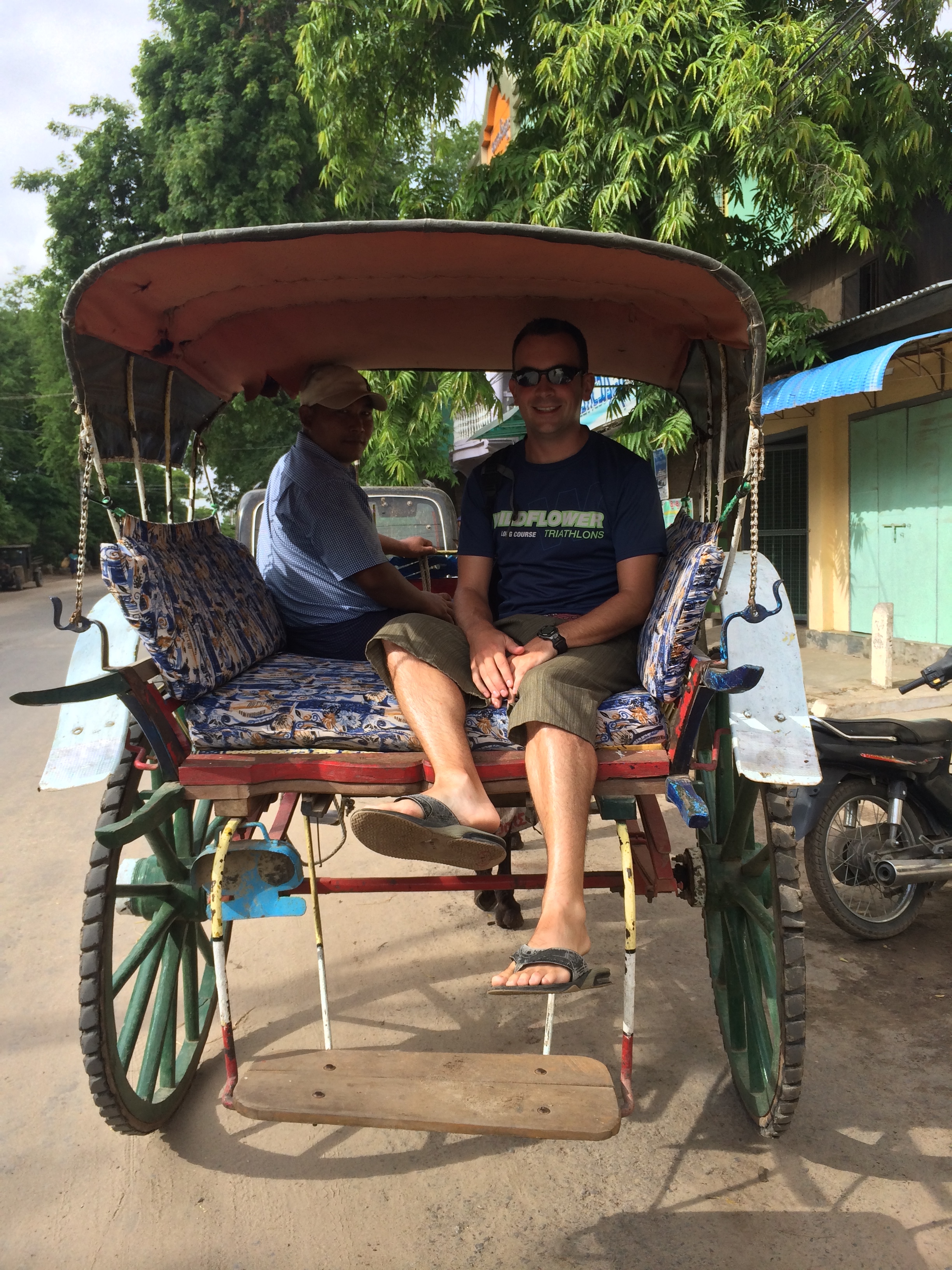
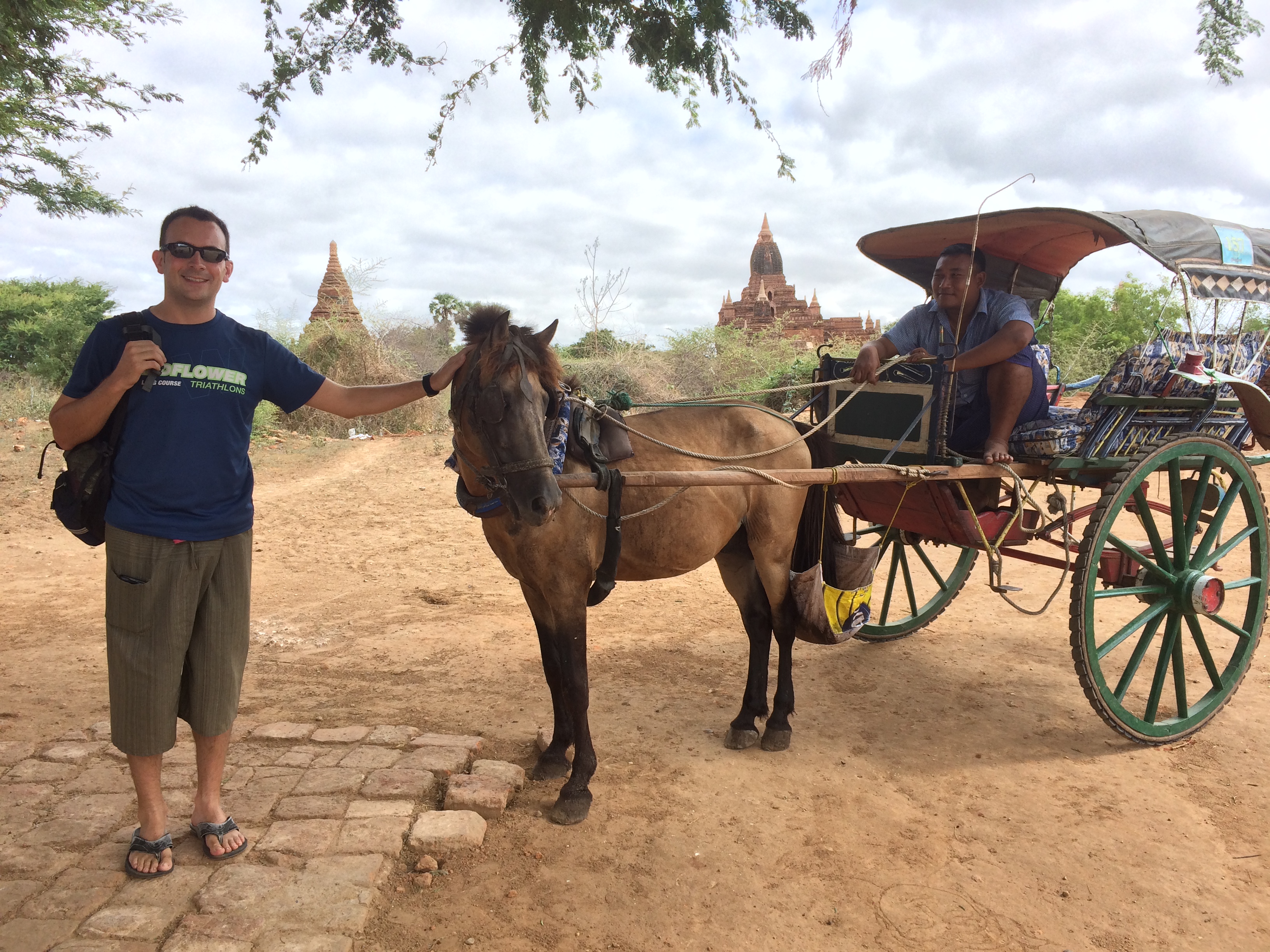
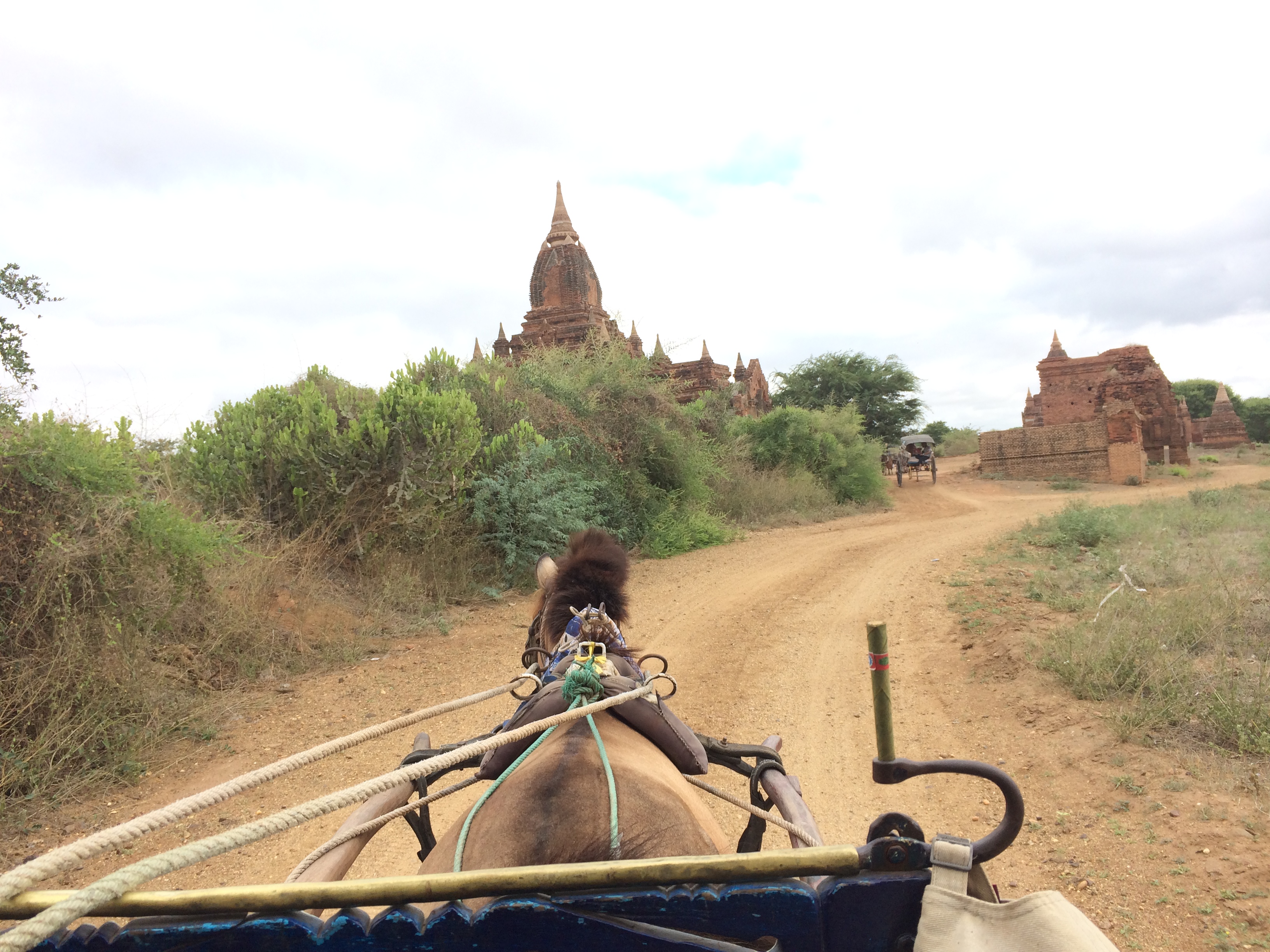
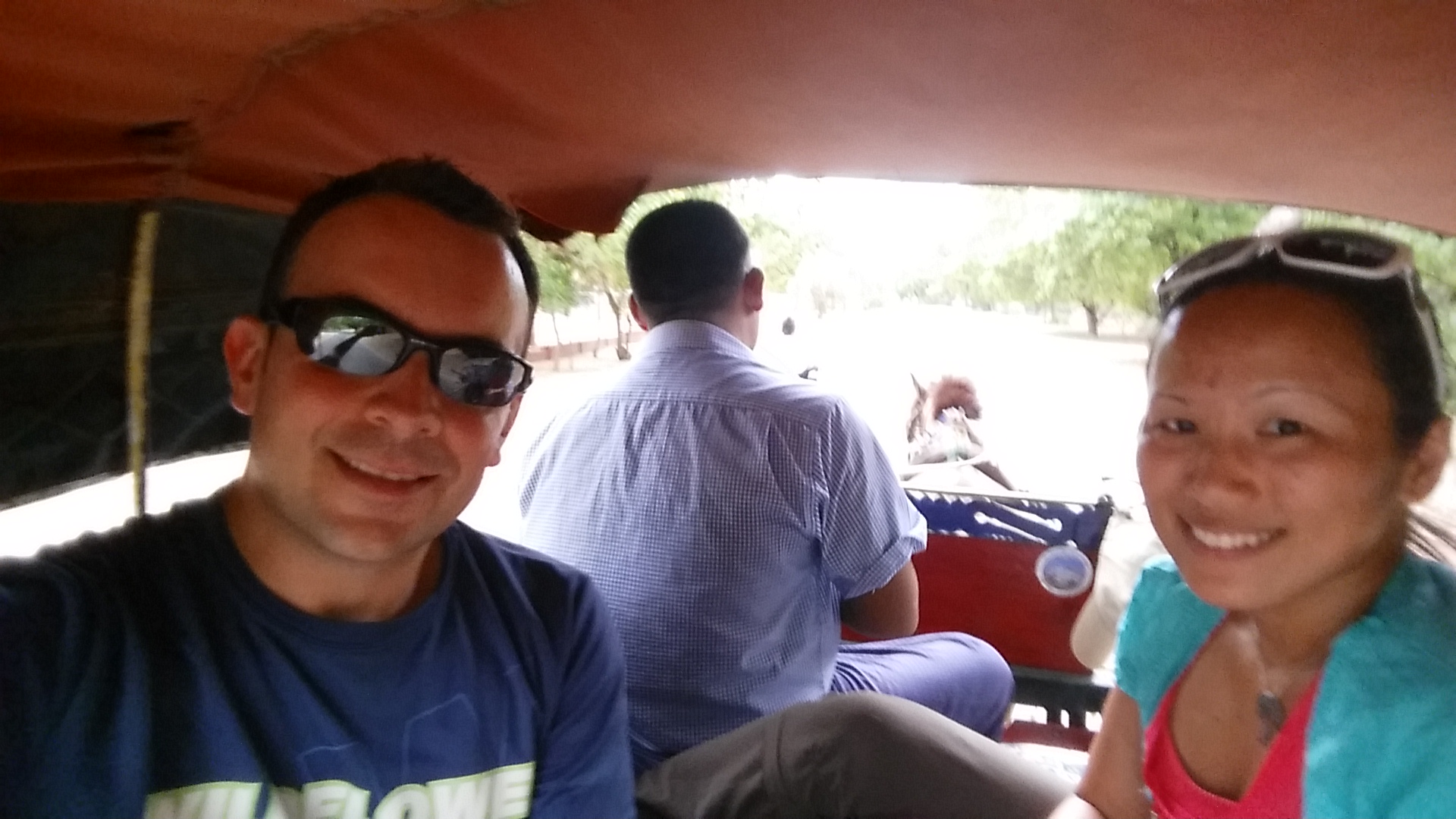
I will also say that I LOVED Bagan during the low rainy season; the weather was pleasant for the majority of the time, with the sun buried behind clouds and a strong wind to provide comfort. The number of tourists was phenomenally low; the restaurant street known as Restaurant Row was deserted, there were only a handful of tourists at sunrise, and Chris and I more than once had a lovely temple all to ourselves. And finally, we never once had to use our umbrellas or ponchos since it never rained while touring the archeological complex.
During our first day, we visited the twelve following sites in this order:
Thagyarhit Temple (no picture!)
Some temple behind Thatbyinnyu Temple: 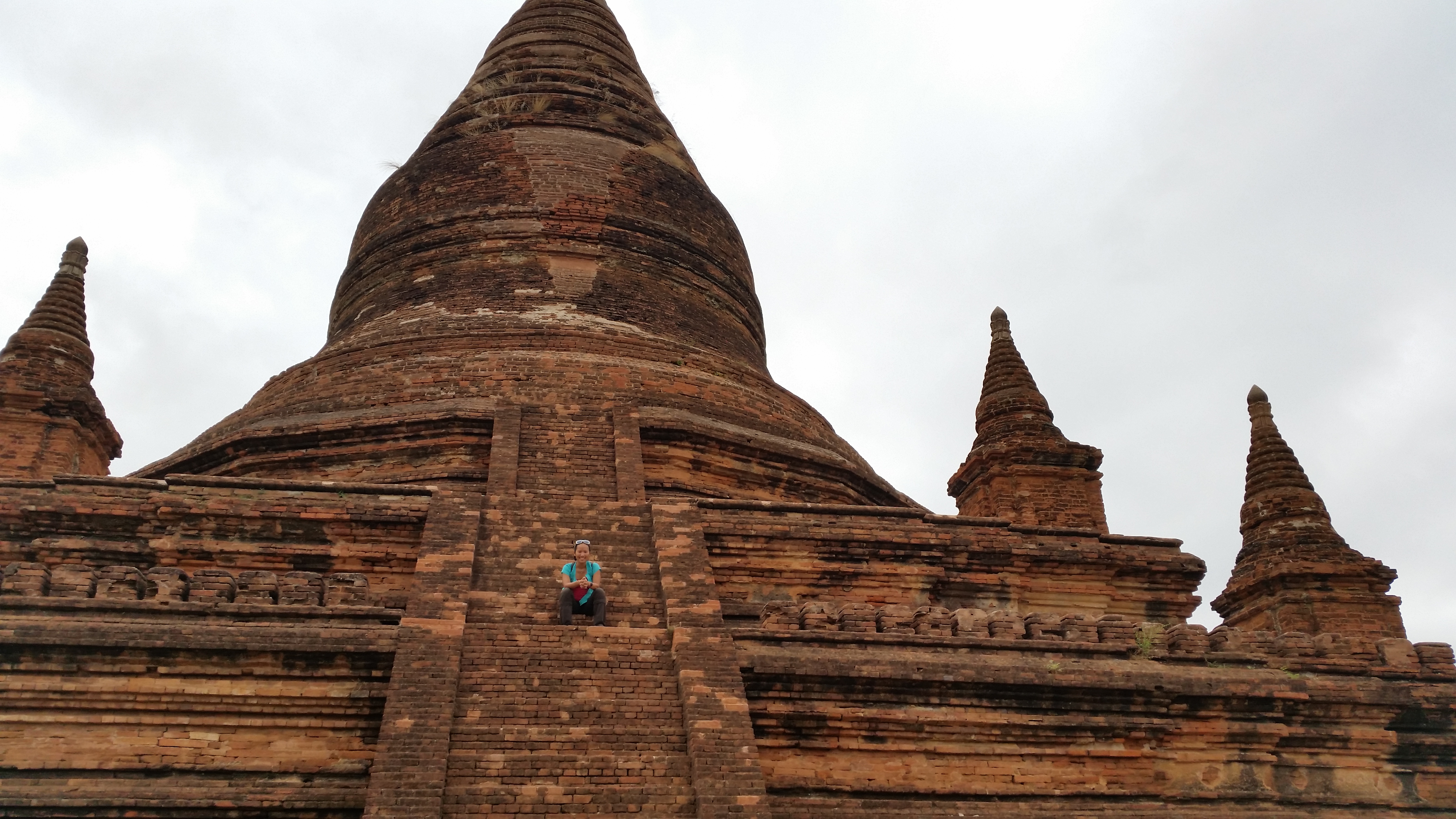
Shwegugyi (no picture!)
Manuhar Temple (no picture!)
Shwesendaw Pagoda (we were so excited to go up, none of us took a picture of the actual structure!)
Shwesendaw is the popoular spot for sunset and sunrise. Photos below are from sunset (and photos of us waiting patiently for sunset). 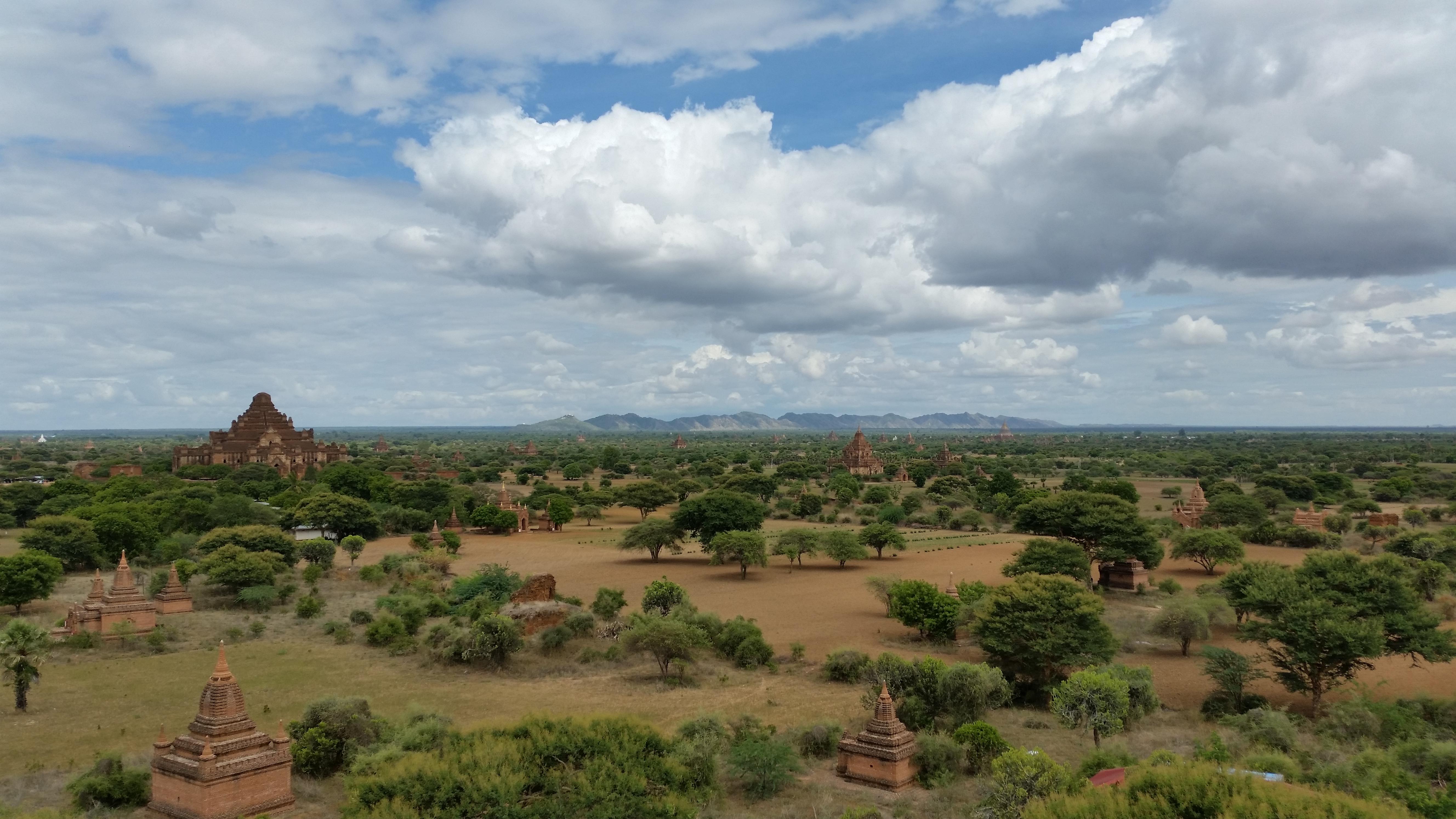
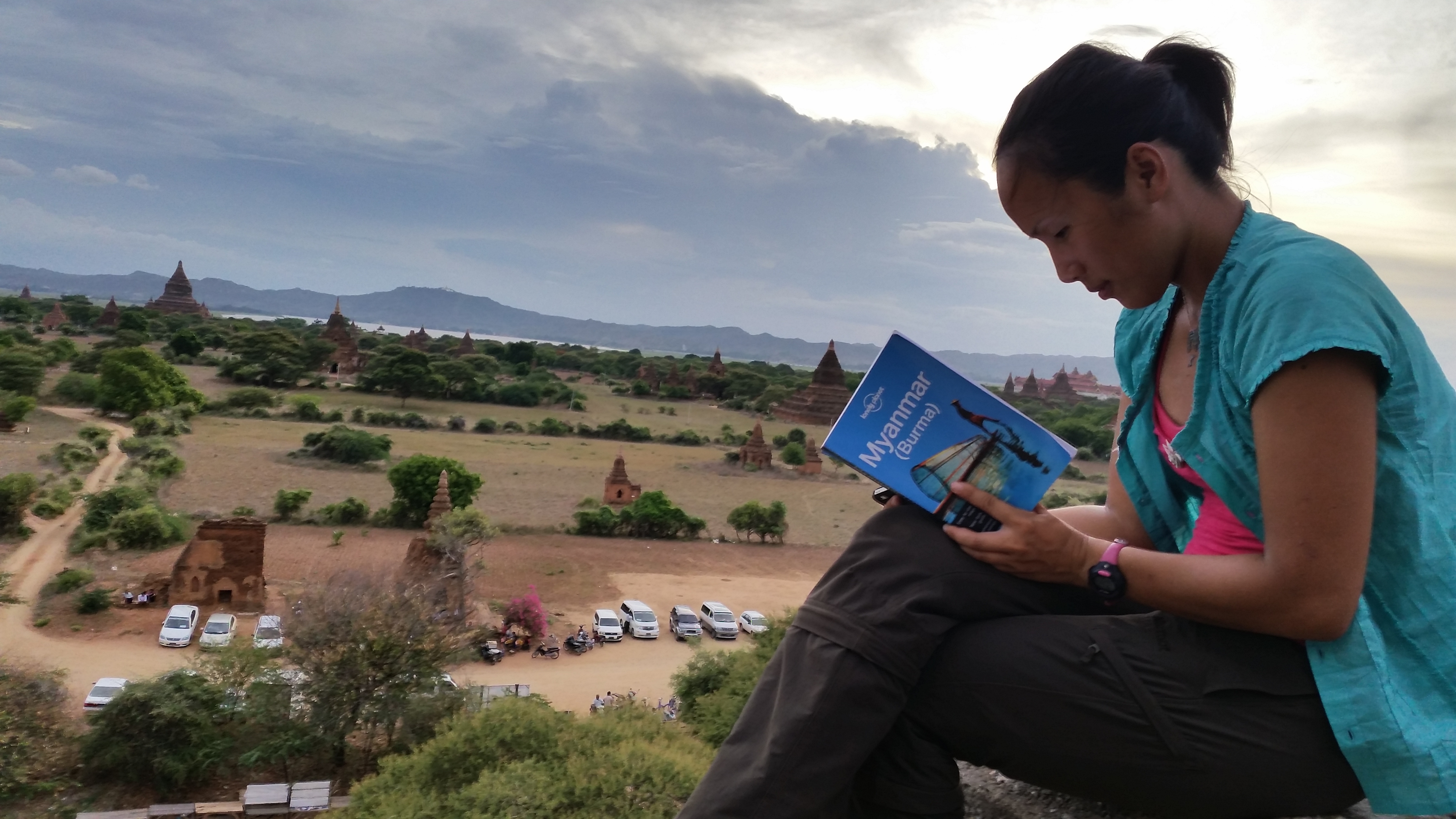
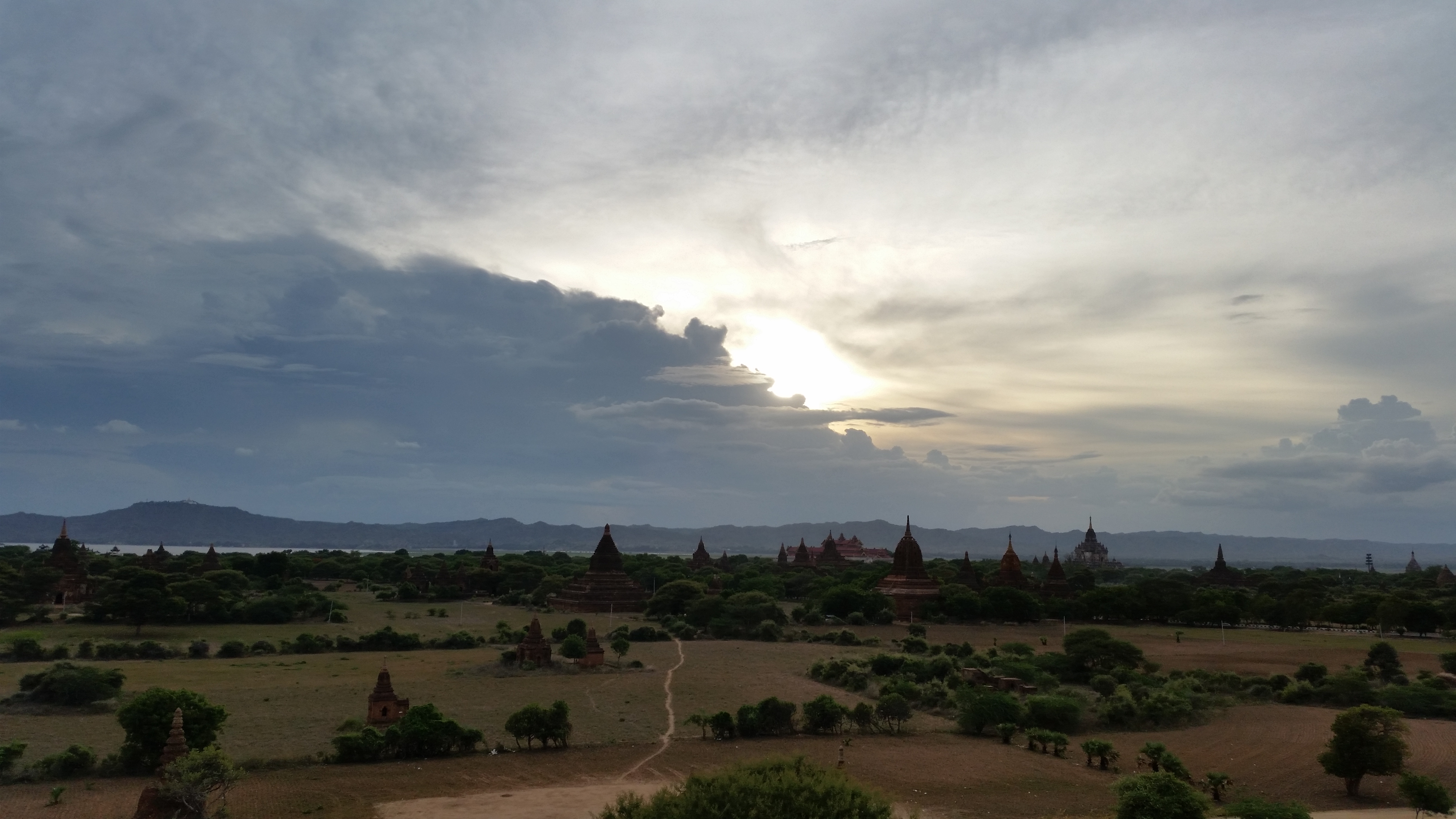
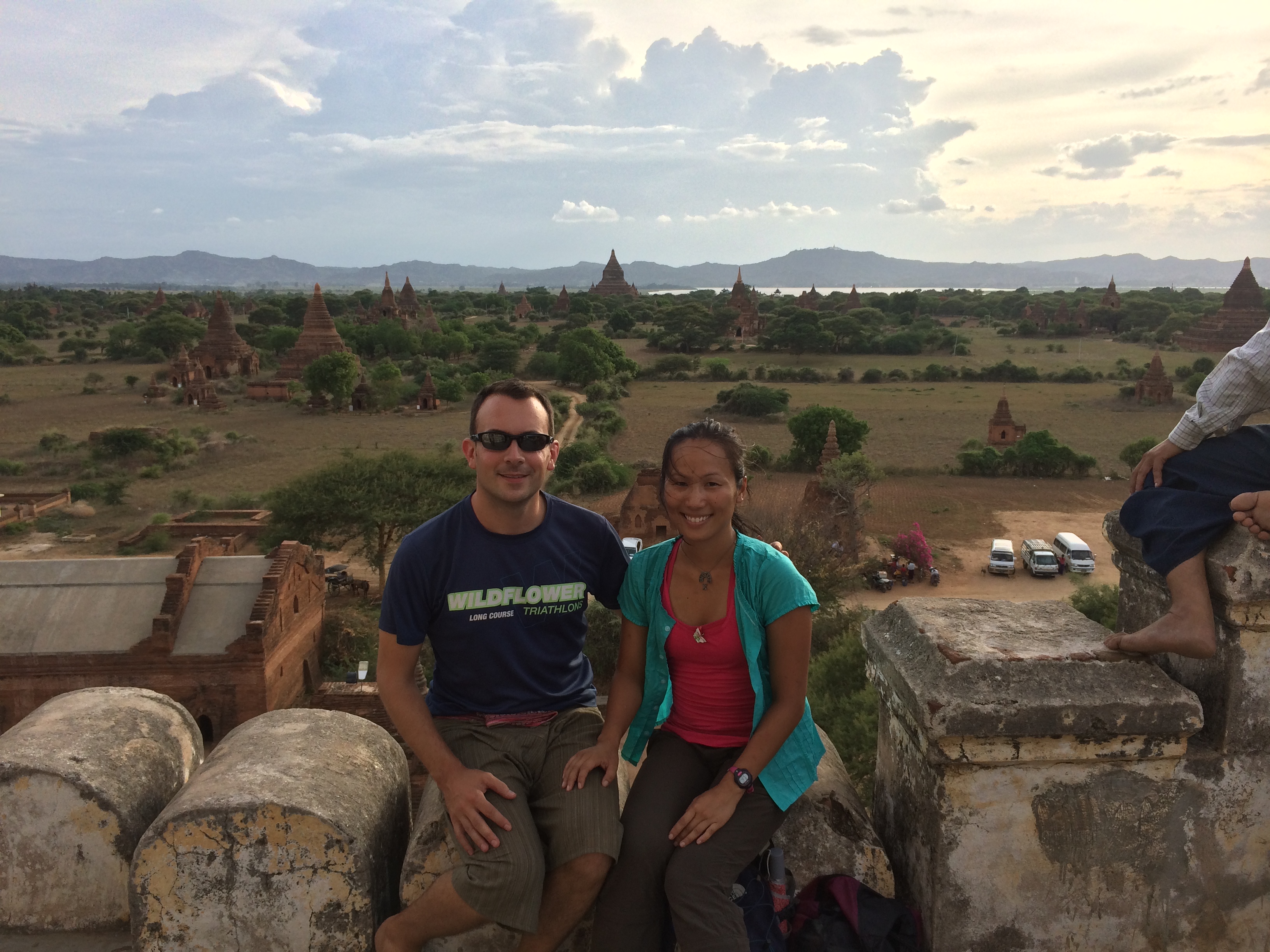
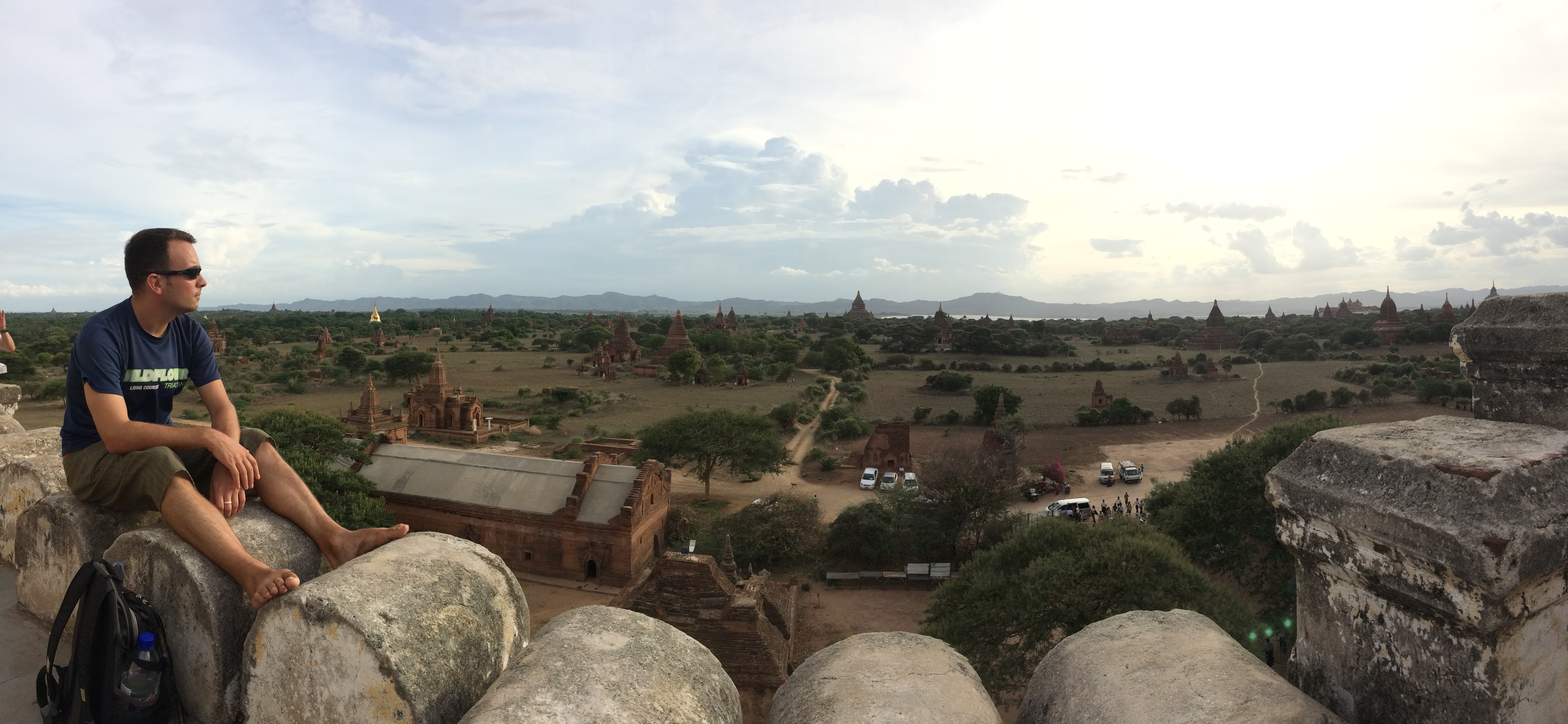
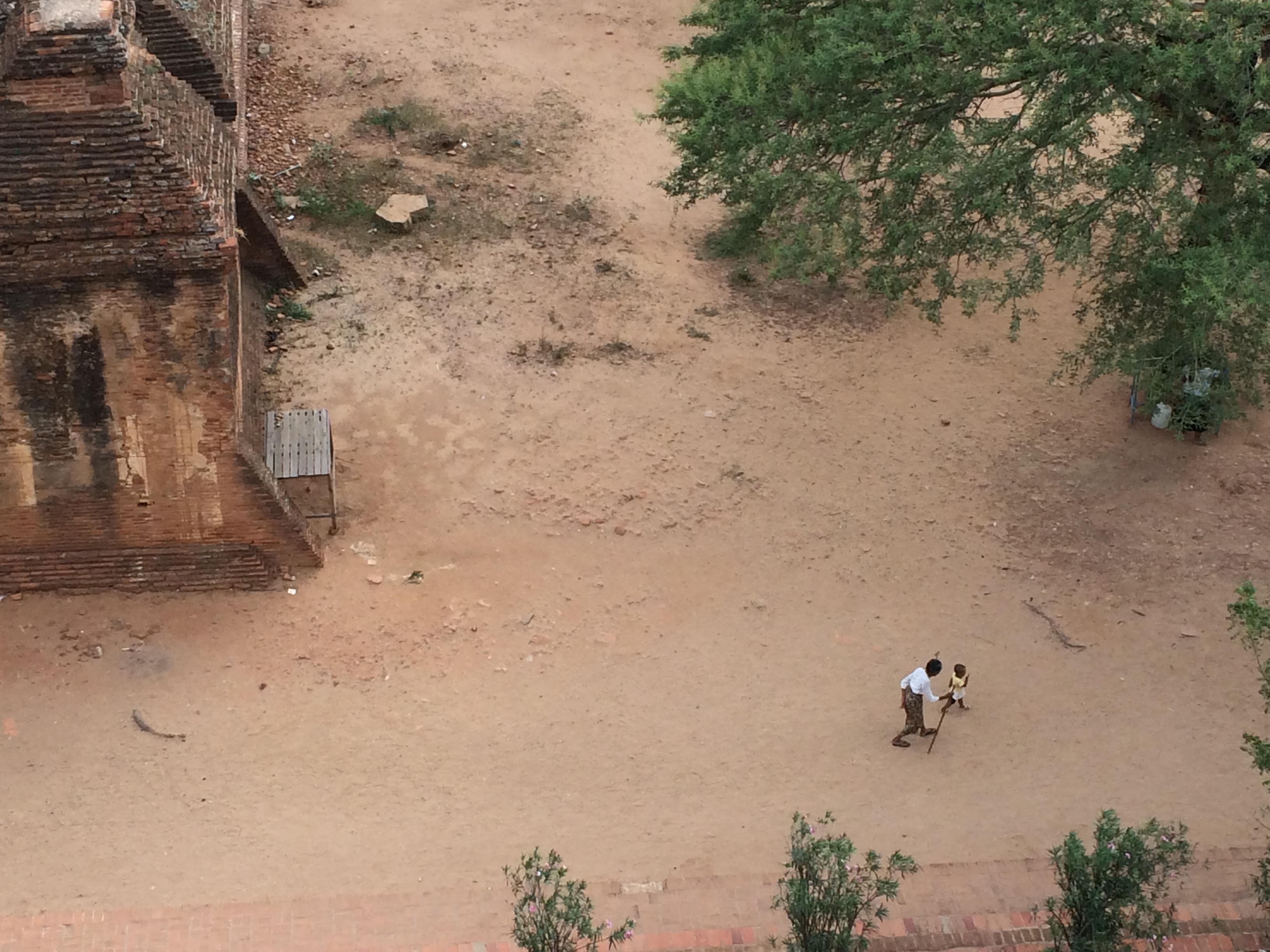

Each site has its own significance and you can briefly read their historic stories here.
On our second day of exploration we rented electric bicycles (so much fun!) to tour the sites we missed out on the previous day. We got up at 4:30am and zoomed out of our hotel in pitch darkness at 5am to catch the sunrise at 5:37am. I’ve always been more fond of sunrises than sunsets; there are only a fraction of the tourists from sunset, and they require more work which in the end makes it more rewarding. Hushed whispers are only shared during sunrise as opposed to the rancor of chatter during the crowds of sunset. In darkness the largest sites are grandiose as they stand illuminated by bright, gold lights, but as the sky fills with color, the bright lights are turned off and its natural beauty glistens in the sun. Stupa spires fill the panoramic skyline, engulfing one in breathtaking beauty. Photos do not do justice, but here are the sunrise photos below.
After sunrise, we continued to explore the central plains of Bagan, checking out the eerie “bad karma” Dhamma Yangyi Temple: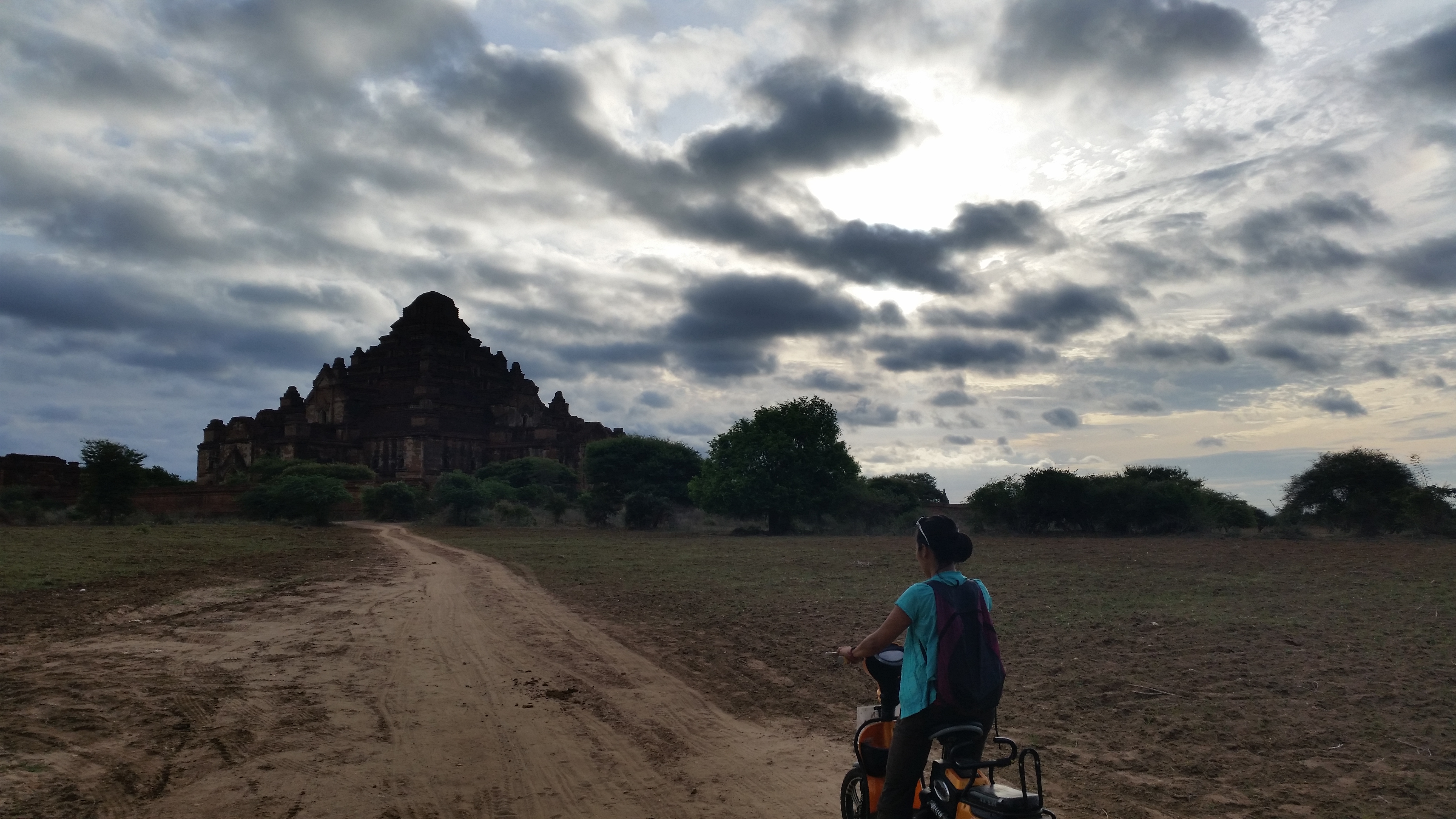
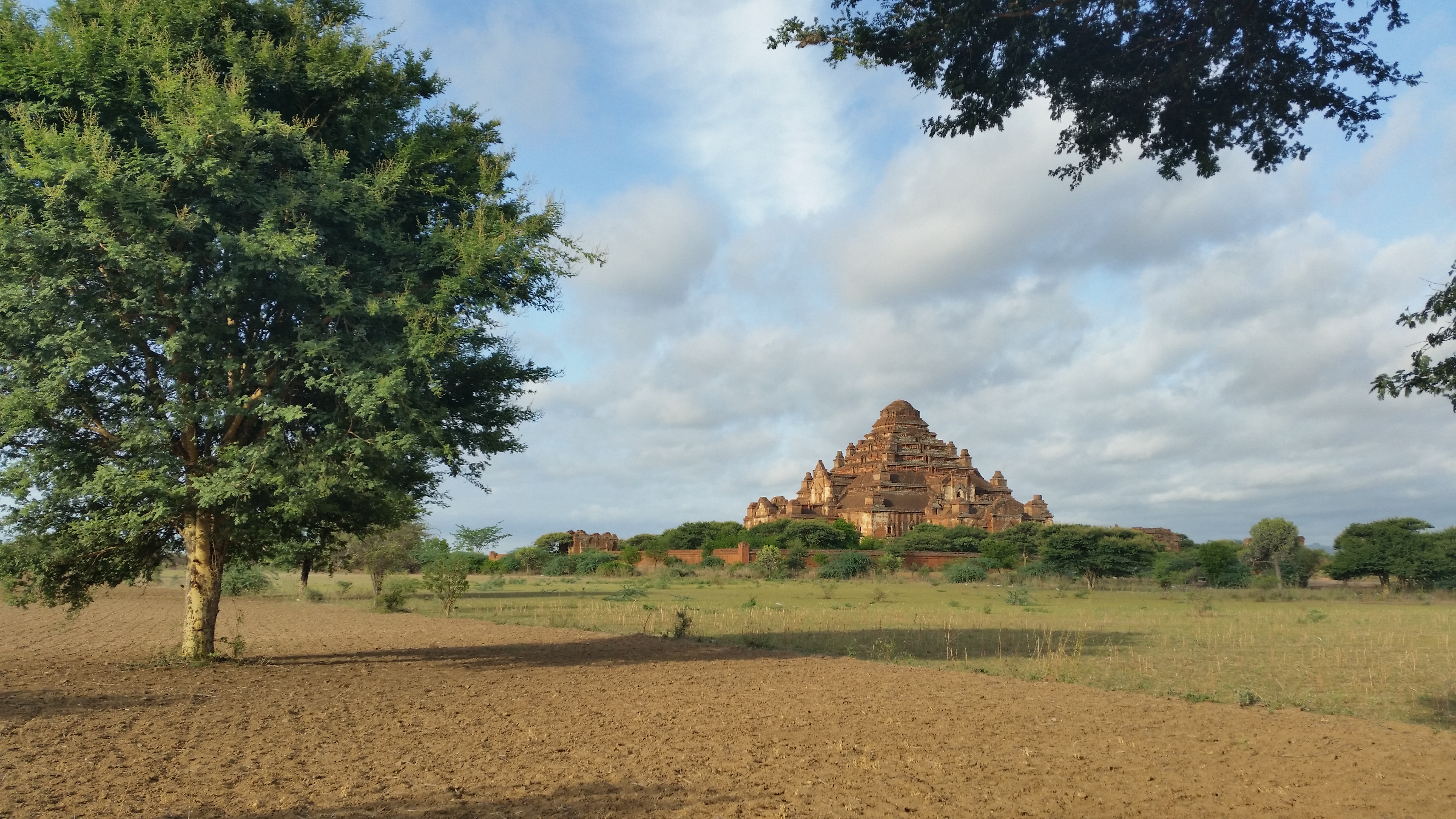
Pyathada Paya, the largest monument in all of Bagan, ended up being our last visited and our most favorite site. It is said that having this place to yourself is unlikely, but since it was only approximately 8am during our visit, we lucked out and not one soul appeared except for the local farmers who passed by on their motorbikes. As we explored the interior, we came across a stairway behind an unlocked metal door. Although the door was closed, a NO ENTRY sign could not be found, so we pulled the door open and cautiously made our way up the dark, narrow stairs. 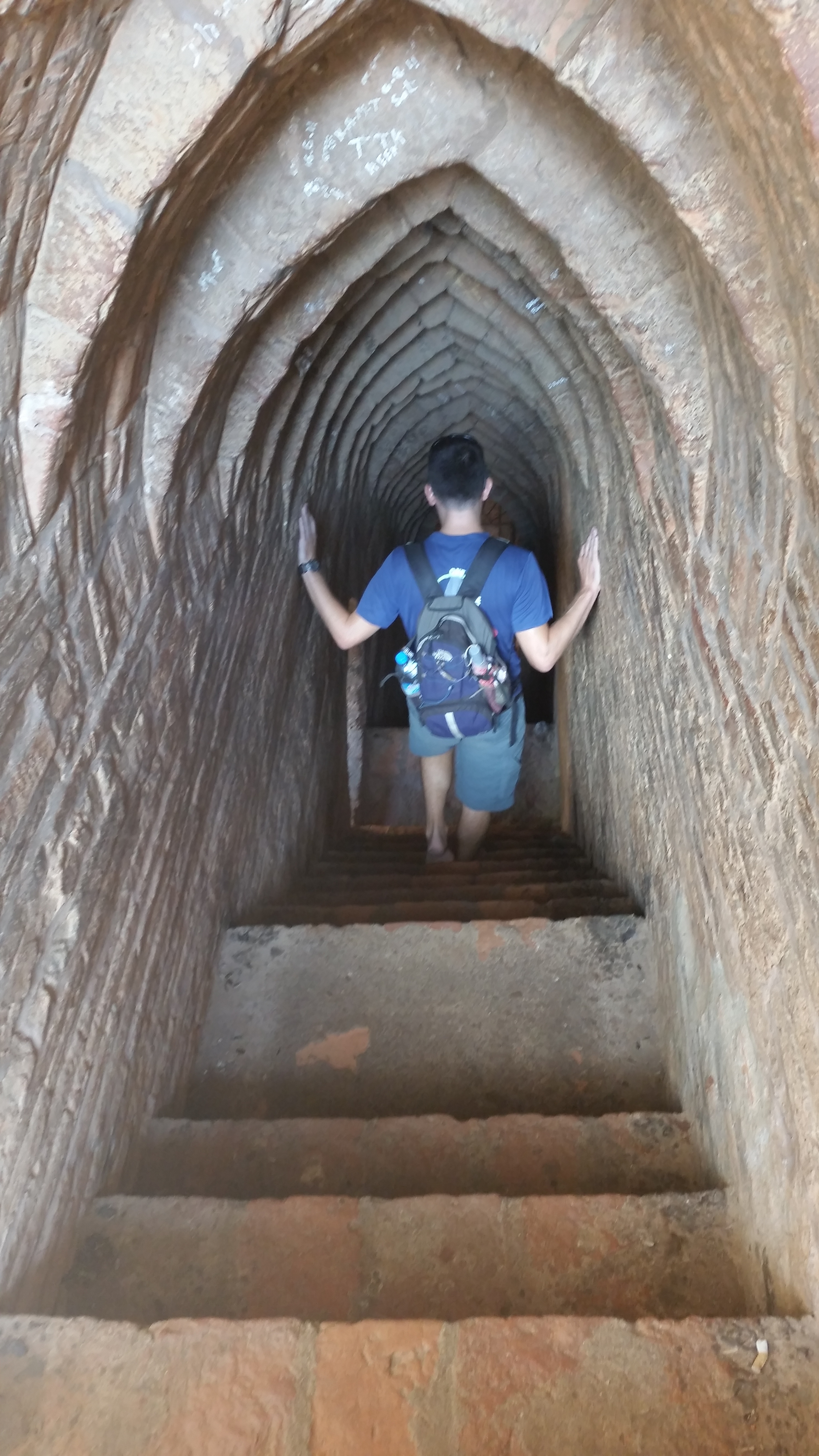
Its brick terrace turned out to be surprisingly enormous and boasted 360º views. We spent some time sitting up on the roof in silence, listening to the wind and taking in the skyline before us.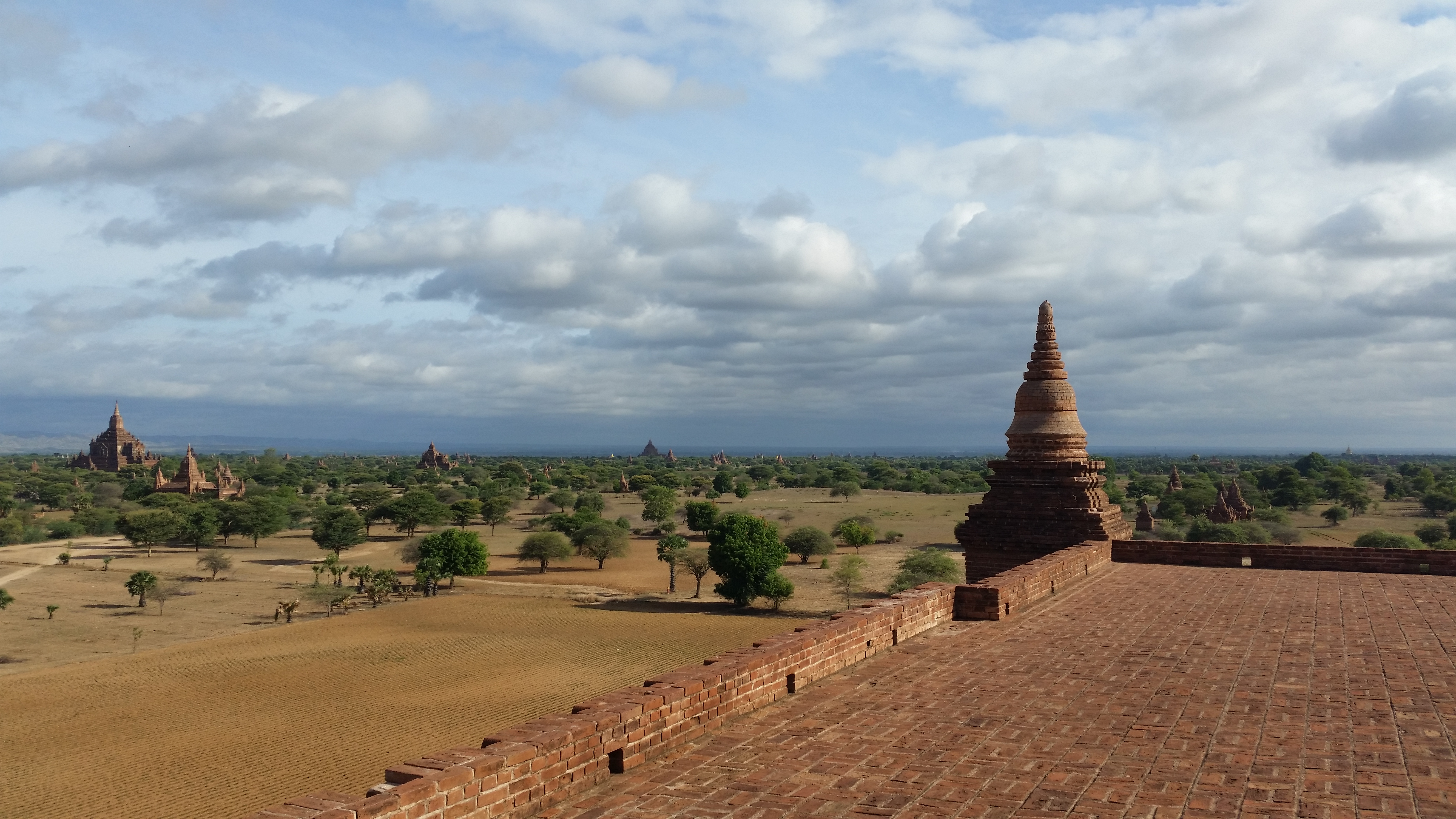
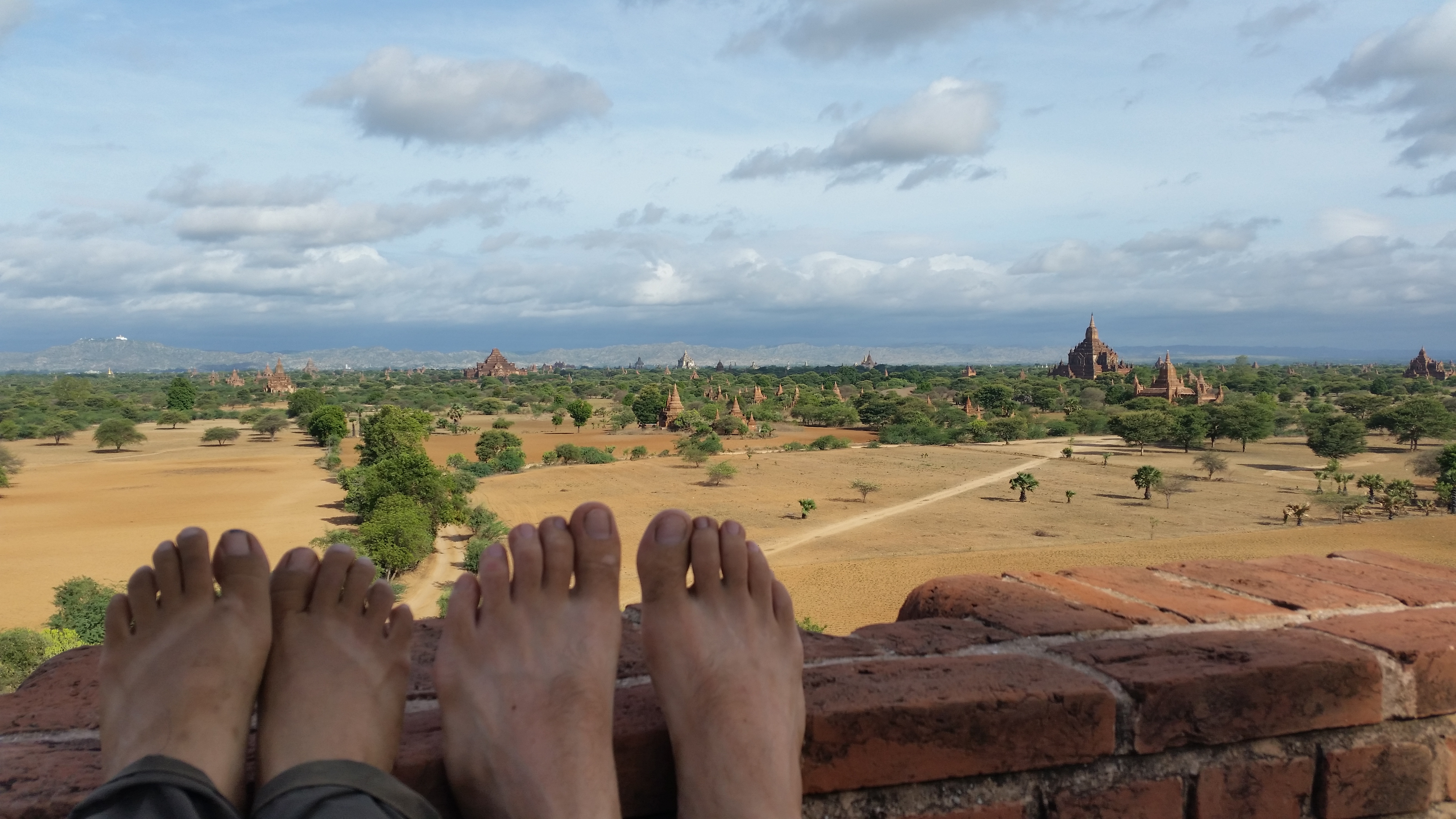
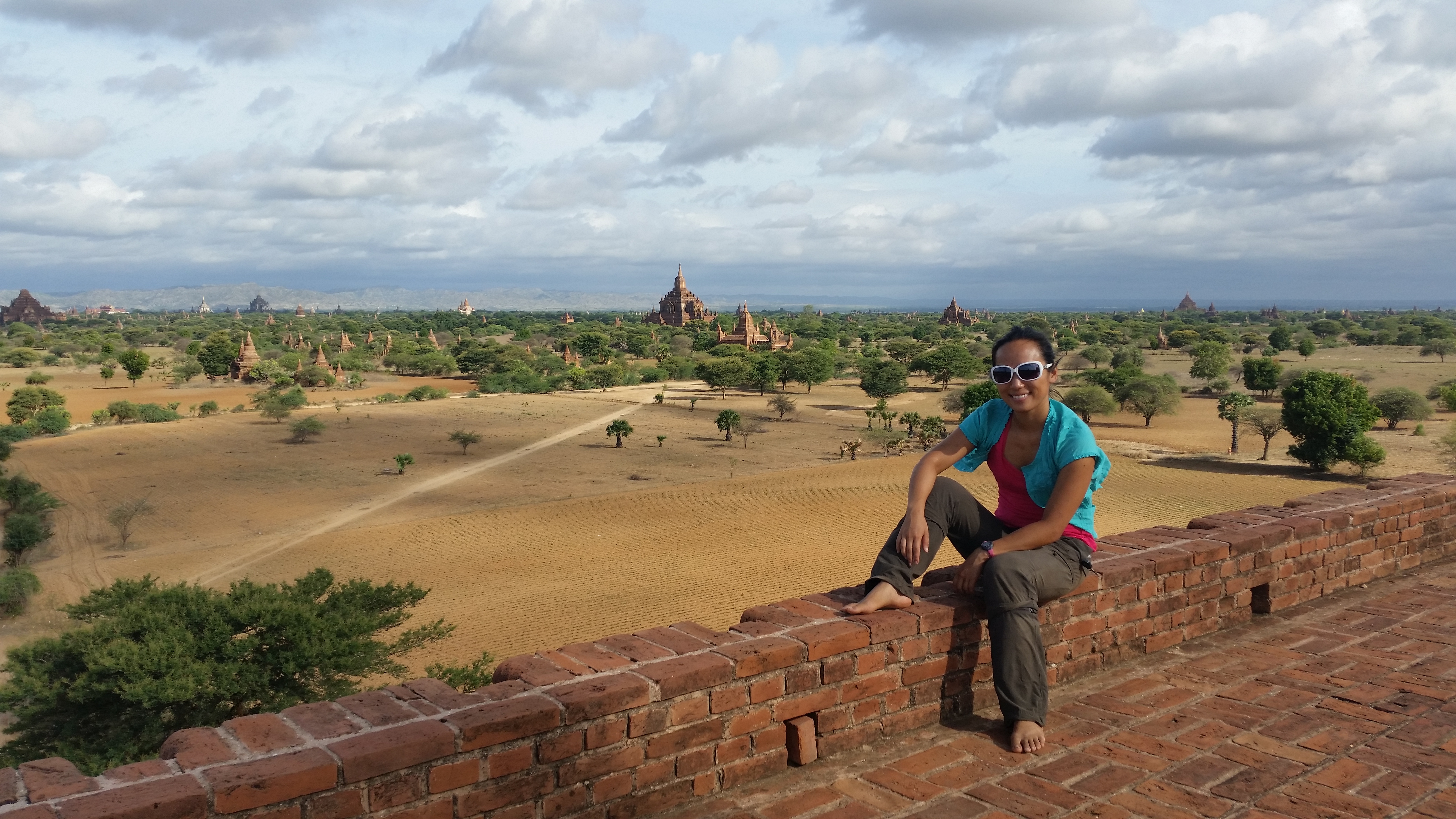
By 9am, we “finished” our tour of the religious sites and spent the rest of the morning cruising through New Bagan, Old Bagan, and Nyaung U, passing up a number of the sites we visited the day before with Mimin and Lucky. It is easy to become infatuated with the archeological complex of Bagan; exploring it proved to be less stressful than exploring Angkor Wat. I highly advise against going to Bagan between March and May, the hottest months of the year. Rather, come early in the low rainy season when the weather is bearable and more often pleasant than not. Come to Bagan to marvel at Myanmar’s infamous skyline of never-ending stupas and leave with lasting memories more beautiful than your photos will ever be able to capture.

